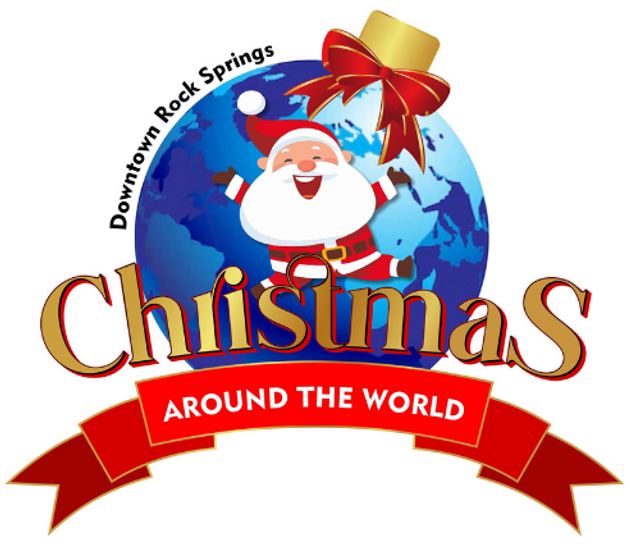
This holiday season, the Rock Springs Main Street/Urban Renewal Agency (URA) is launching an exciting new project that pays tribute to the city’s rich cultural heritage. Celebrating Rock Springs' proud title as the "Home of 56 Nationalities," Downtown Rock Springs will feature hand-drawn, life-sized depictions of Santas from around the world, each representing one of the 56 nationalities that helped shape the city.
These artistic caricatures of Santas will be displayed along South Main Street and North Front Street in Downtown Rock Springs, accompanied by details about the holiday traditions and celebrations of the featured nationality. This project is designed to educate and inspire residents and visitors, illuminating the diverse cultural influences that make Rock Springs such a unique and vibrant community.
These characters were created by Susan Fitch Design
Check out each Santa below:
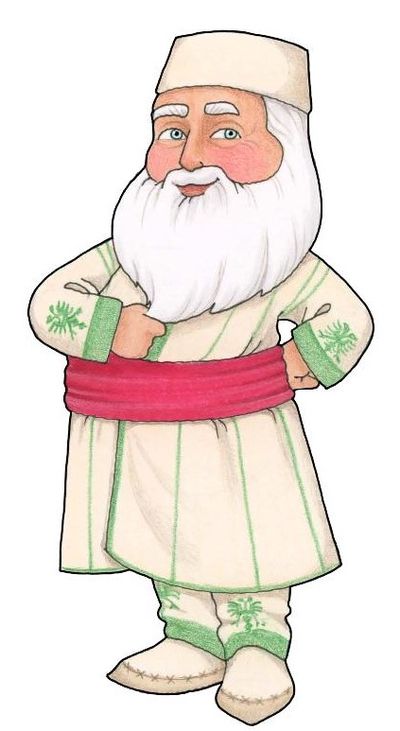
Albania is a small country located in Southeastern Europe, on the Balkan Peninsula. It is bordered by Montenegro to the northwest, Kosovo to the northeast, North Macedonia to the east, and Greece to the south. Albania also has a long coastline along the Adriatic Sea to the west and the Ionian Sea to the southwest, offering beautiful views and access to Mediterranean waters.
In Albania, Christmas is a time for family gatherings and shared meals, though the larger celebration often happens around New Year’s Eve. While Albania is predominantly Muslim, the Christian minority celebrates Christmas with traditional decorations such as trees and lights, and festive foods like turkey, baklava, and other sweets.
Santa Claus in Albania is called Babadimri, or "Father Winter." Rather than focusing solely on Christmas, Babadimri is more closely tied to New Year’s Eve festivities, where he is celebrated for bringing gifts to children. Albanians often anticipate his arrival on New Year's Eve, a tradition that blends both local customs and Western influences. Children leave out shoes or stockings in the hope that Babadimri will fill them with gifts, symbolizing a hopeful and prosperous start to the new year.
*Please note that this is a brief description, and while we strive for accuracy, the information provided may not be 100% guaranteed. If you notice any errors or have suggested edits, we encourage you to contact our office with your feedback.
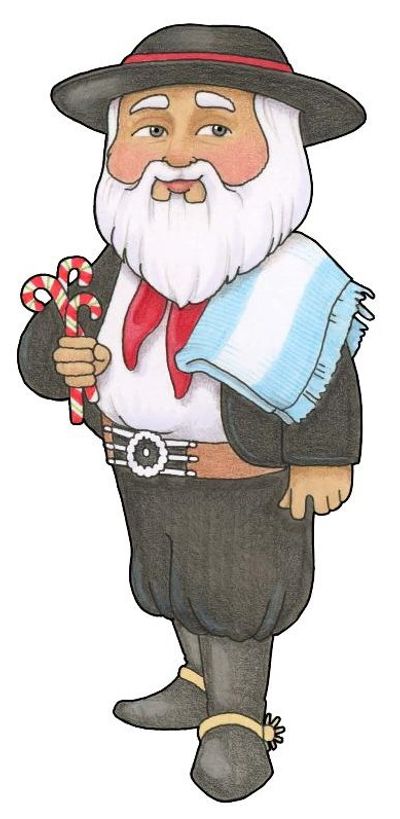
Argentina is located in South America, stretching from the Andes Mountains in the west to the Atlantic Ocean in the east. It shares borders with Chile to the west, Bolivia and Paraguay to the north, Brazil to the northeast, and Uruguay to the east. Argentina is known for its diverse landscapes, from vast pampas to Patagonian glaciers, and its vibrant culture.
In Argentina, Santa Claus is known as Papá Noel. Christmas is celebrated during the summer, as Argentina is in the Southern Hemisphere, so many holiday traditions reflect the warm weather. Families gather for large dinners on Christmas Eve, which often feature roast meats, salads, and a wide range of desserts like panettone. After the meal, fireworks light up the night sky, and Papá Noel is said to visit homes to leave gifts for children.
Christmas Day itself is a more relaxed holiday, often spent with family and friends at outdoor gatherings or by the pool. Papá Noel’s presence in Argentina is a blend of local customs and European influences, with his role centering around bringing joy and gifts to children.
*Please note that this is a brief description, and while we strive for accuracy, the information provided may not be 100% guaranteed. If you notice any errors or have suggested edits, we encourage you to contact our office with your feedback.
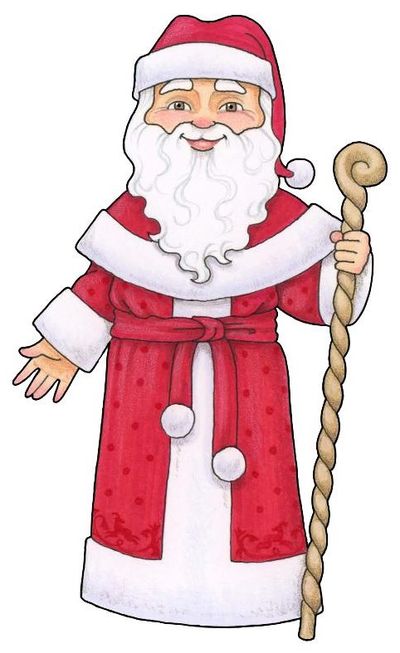
Armenia is a landlocked country located in the mountainous region of the South Caucasus, between Europe and Asia. It is bordered by Turkey to the west, Georgia to the north, Azerbaijan to the east, and Iran to the south. Despite the Turkish genocide of 1915–1917, Armenia is known for its rich history and cultural heritage, Armenia was the first country to adopt Christianity as its official religion, and this influence is deeply embedded in its holiday traditions.
In Armenia, Santa Claus is known as Gaghant Baba or Dzmer Pap, both meaning "Winter Father." The figure of Gaghant Baba is traditionally associated with New Year’s Eve rather than Christmas, which is celebrated on January 6 in the Armenian Apostolic Church. Gaghant Baba brings gifts to children as part of New Year’s celebrations, which are marked with family feasts, fireworks, and the exchange of presents. Armenian families often prepare a lavish spread of traditional dishes, such as dolma, khorovats (grilled meats), and dried fruits.
*Please note that this is a brief description, and while we strive for accuracy, the information provided may not be 100% guaranteed. If you notice any errors or have suggested edits, we encourage you to contact our office with your feedback.
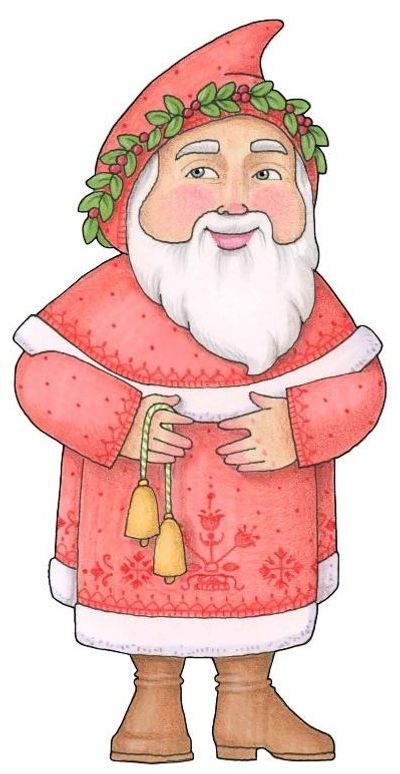
Austria is a landlocked country located in Central Europe, bordered by Germany and the Czech Republic to the north, Slovakia and Hungary to the east, Slovenia and Italy to the south, and Switzerland and Liechtenstein to the west. Known for its beautiful Alpine landscape, Austria has a rich cultural heritage, with Christmas traditions that reflect its deep-rooted Catholic faith.
In Austria, Santa Claus is often known as St. Nicholas (Sankt Nikolaus), and his feast day is celebrated on December 6. On the night before, Austrian children leave out polished shoes for St. Nicholas, who fills them with sweets and small gifts if they’ve been good. However, Austrian traditions also include a figure called Krampus, a frightening creature who accompanies St. Nicholas and is said to punish naughty children with birch branches or coal. Krampus has become a popular figure in Austrian folklore, with festivals and parades dedicated to his legend.
In addition to St. Nicholas, the "Christkind" (Christ Child) plays a central role in Austrian Christmas celebrations. The Christkind, often depicted as a golden-haired angel, is believed to bring gifts to children on Christmas Eve. Families gather to decorate the Christmas tree and enjoy a festive meal, which traditionally includes dishes like roasted goose, carp, and Christmas cookies like Vanillekipferl (vanilla crescent cookies). Many Austrians also attend midnight Mass on Christmas Eve to celebrate the religious aspect of the holiday.
*Please note that this is a brief description, and while we strive for accuracy, the information provided may not be 100% guaranteed. If you notice any errors or have suggested edits, we encourage you to contact our office with your feedback.
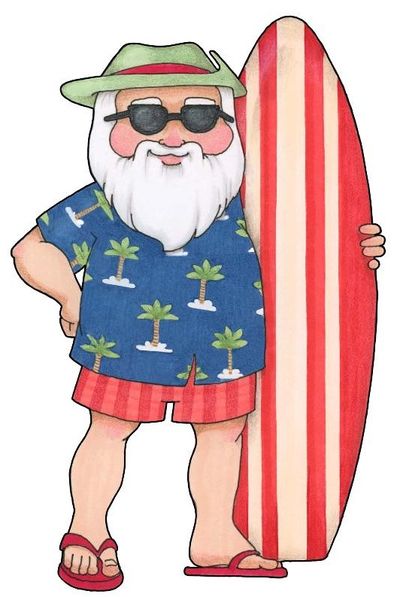
Australia is a vast country and continent located in the Southern Hemisphere, bordered by the Indian and Pacific Oceans. It lies southeast of Asia and is surrounded by numerous smaller islands. Known for its unique wildlife and stunning natural landscapes, from deserts to rainforests, Australia experiences summer during the Christmas season.
In Australia, Santa Claus is also called Santa or Father Christmas, and he plays a central role in holiday celebrations, despite the warm, sunny weather. Australian Christmas traditions reflect this seasonal difference, with families often enjoying barbecues, beach outings, and outdoor gatherings rather than the cold-weather traditions common in the Northern Hemisphere. Santa is said to deliver presents to children on Christmas Eve, and many homes are decorated with lights, trees, and festive ornaments.
A fun twist on the Santa tradition in Australia is that sometimes he is depicted arriving on a surfboard or in board shorts, embracing the country’s laid-back, summer holiday vibe. Families gather on Christmas Day to enjoy seafood, salads, and desserts like pavlova, often outdoors to make the most of the summer sun.
*Please note that this is a brief description, and while we strive for accuracy, the information provided may not be 100% guaranteed. If you notice any errors or have suggested edits, we encourage you to contact our office with your feedback.
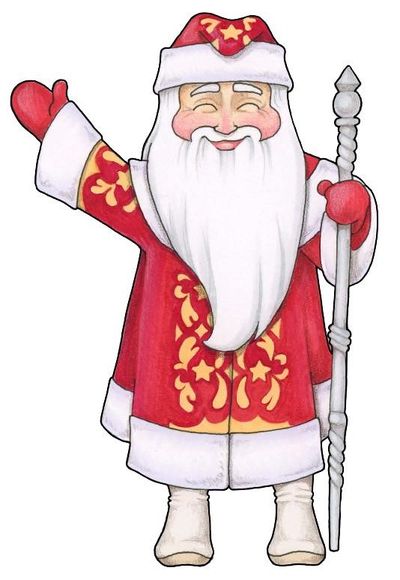
Belarus is a landlocked country in Eastern Europe, bordered by Russia to the northeast, Ukraine to the south, Poland to the west, and Lithuania and Latvia to the northwest. Known for its vast forests, rivers, and lakes, Belarus has a rich cultural heritage influenced by both Eastern European and Slavic traditions.
In Belarus, Santa Claus is known as Dzied Maroz (Grandfather Frost), and he is more closely associated with New Year’s celebrations rather than Christmas. Dzied Maroz is often accompanied by his granddaughter, Snegurochka (the Snow Maiden), and together they bring gifts to children on New Year's Eve. While Christmas is celebrated by the Orthodox community on January 7 (according to the Julian calendar), New Year’s Eve is a secular holiday for most, and it is when the main festivities occur.
Traditions around Dzied Maroz include decorating a New Year’s tree, which resembles a Christmas tree, and gathering for family feasts filled with traditional foods like holodets (meat jelly) and herring under a fur coat (layered salad). Children wait eagerly for Dzied Maroz to bring gifts, often leaving out wishes or notes for him under the tree.
*Please note that this is a brief description, and while we strive for accuracy, the information provided may not be 100% guaranteed. If you notice any errors or have suggested edits, we encourage you to contact our office with your feedback.
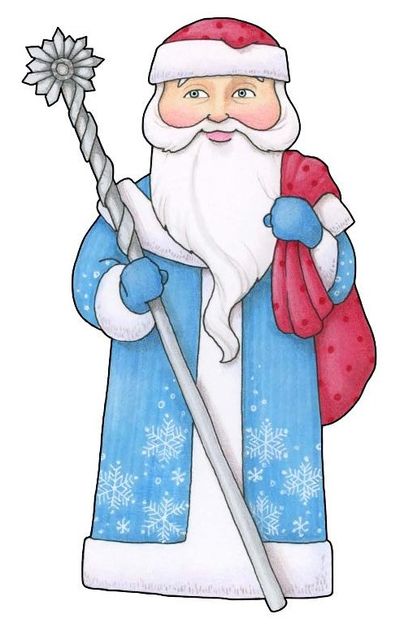
Bosnia and Herzegovina is a country located in Southeast Europe on the Balkan Peninsula. It is bordered by Croatia to the north and west, Serbia to the east, and Montenegro to the southeast, with a small coastline along the Adriatic Sea. The country has a diverse cultural and religious background, with Islam, Orthodoxy, and Catholicism being the predominant faiths, which influence how holidays are celebrated.
In Bosnia and Herzegovina, Santa Claus is known as Djed Mraz (Grandfather Frost), especially in more secular or New Year's celebrations. He brings gifts to children on New Year's Eve, a tradition that became more prominent during the socialist era when Christmas was de-emphasized. Djed Mraz arrives, often accompanied by his helper, to distribute gifts and bring joy to children as families gather to celebrate the New Year with festive dinners, music, and fireworks.
For those celebrating Christmas, particularly in the Catholic and Orthodox communities, the holiday revolves around family, religious services, and traditional meals. Catholic Bosnians celebrate Christmas on December 25, while Orthodox Bosnians follow the Julian calendar and celebrate on January 7. Christmas traditions include attending midnight Mass, exchanging gifts, and preparing dishes like sarma (cabbage rolls) and baklava.
*Please note that this is a brief description, and while we strive for accuracy, the information provided may not be 100% guaranteed. If you notice any errors or have suggested edits, we encourage you to contact our office with your feedback.
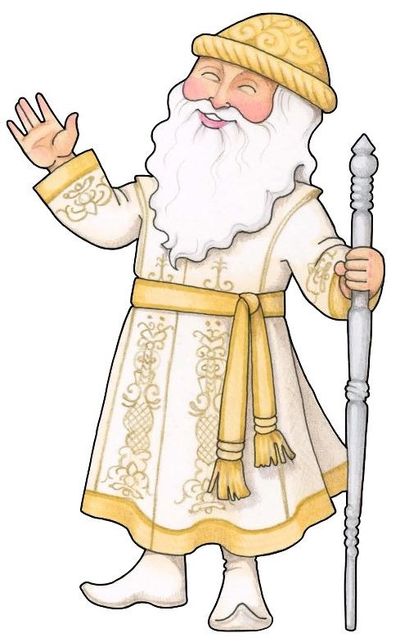
Bulgaria is a country in Southeast Europe, located on the Balkan Peninsula. It is bordered by Romania to the north, Serbia and North Macedonia to the west, Greece and Turkey to the south, and the Black Sea to the east. Bulgaria has a rich cultural heritage, deeply influenced by Eastern Orthodox Christianity, which plays a significant role in its holiday traditions.
In Bulgaria, Santa Claus is known as Dyado Koleda, meaning "Grandfather Christmas." Dyado Koleda traditionally visits homes on Christmas Eve (December 24) to leave gifts for children. Bulgarians celebrate Christmas on December 25, according to the Gregorian calendar, with Christmas Eve being an especially important night for family gatherings and religious observances. On this evening, families share a vegetarian meal of odd-numbered dishes, including stuffed peppers, beans, and a special bread called "pitka," which contains a coin. Whoever finds the coin is believed to have good luck in the coming year.
Bulgaria also celebrates a version of Grandfather Frost, Dyado Mraz, who was once popular during the socialist period and is still present in some New Year’s Eve traditions. However, Dyado Koleda remains the key figure for Christmas, symbolizing generosity and joy during the holiday season.
*Please note that this is a brief description, and while we strive for accuracy, the information provided may not be 100% guaranteed. If you notice any errors or have suggested edits, we encourage you to contact our office with your feedback.
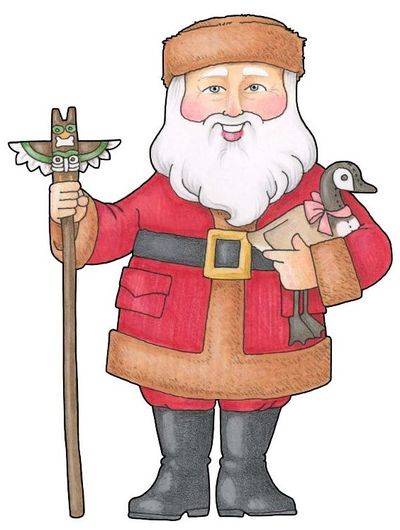
Canada is the second-largest country in the world, located in North America. It stretches from the Atlantic Ocean in the east to the Pacific Ocean in the west and the Arctic Ocean to the north, sharing its southern border with the United States. Canada is known for its multicultural population and diverse holiday traditions that reflect its blend of Indigenous, English, French, and immigrant cultures.
In Canada, Santa Claus is simply known as Santa Claus, and he plays a central role in Christmas celebrations across the country. The image of Santa flying in his sleigh from the North Pole, delivering gifts to children on Christmas Eve, is a beloved tradition. Canadian children often leave out cookies and milk for Santa, along with carrots for his reindeer. The country’s proximity to the North Pole adds a sense of magic to Santa’s journey, and Canada is even home to a popular address where children can send letters to Santa: “Santa Claus, North Pole, H0H 0H0, Canada.”
Christmas traditions in Canada vary by region, reflecting the country’s diverse population. In Quebec, for example, French-speaking Canadians celebrate with a "Réveillon" feast after midnight Mass on Christmas Eve. In other parts of Canada, traditional Christmas dinners often include roast turkey, stuffing, and festive desserts like butter tarts or Christmas pudding. The holiday season in Canada is marked by festive lights, parades, and community gatherings, with Santa often appearing in events like the Santa Claus Parade in Toronto, one of the largest in the world.
*Please note that this is a brief description, and while we strive for accuracy, the information provided may not be 100% guaranteed. If you notice any errors or have suggested edits, we encourage you to contact our office with your feedback.
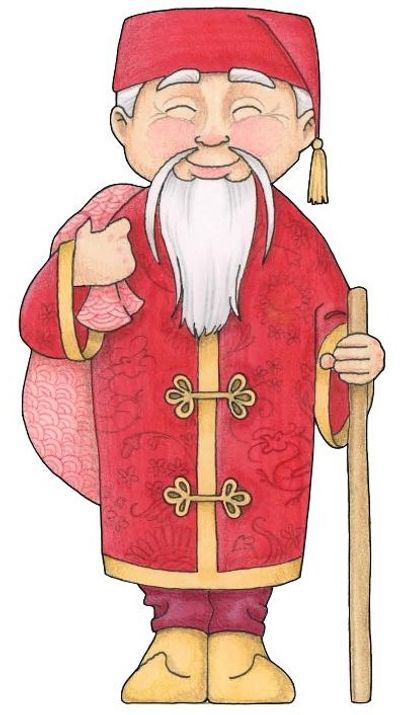
China is located in East Asia and is the world's most populous country. It borders 14 countries, including Russia, India, and Vietnam, and has a long coastline along the Pacific Ocean. While Christmas is not traditionally a Chinese holiday, its popularity has grown, particularly in major cities, due to globalization and commercial influences.
In China, Christmas is more of a secular celebration than a religious one. Santa Claus, known as "Sheng Dan Lao Ren" (Old Man Christmas), is often seen in shopping malls and streets, where he hands out gifts and candy to children. However, Christmas is not a public holiday, and the traditions surrounding it are largely commercial. Christmas trees, lights, and festive decorations can be found in large cities, and it has become a popular time for shopping, parties, and gift exchanges, especially among younger generations.
An interesting modern tradition in China is the exchange of apples on Christmas Eve. Apples are often given as gifts because the word for "apple" (苹果, píngguǒ) sounds similar to " peaceful night" (平安, píng'ān) in Chinese, tying it to the idea of wishing peace and goodwill during the season.
*Please note that this is a brief description, and while we strive for accuracy, the information provided may not be 100% guaranteed. If you notice any errors or have suggested edits, we encourage you to contact our office with your feedback.
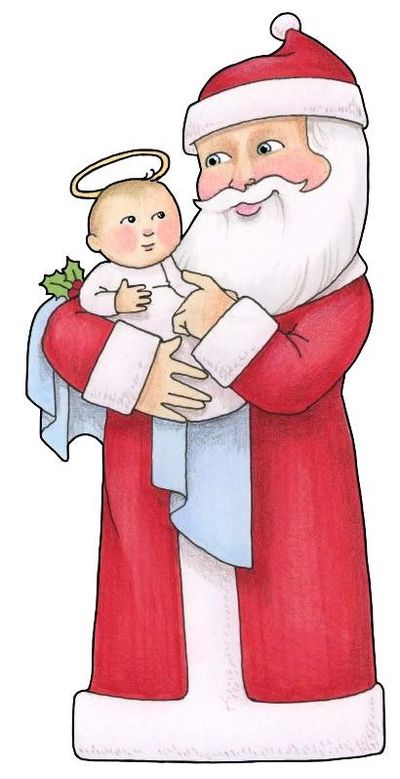
Colombia is a country located in the northwest of South America, bordered by Venezuela and Brazil to the east, Peru and Ecuador to the south, Panama to the northwest, and the Caribbean Sea and Pacific Ocean to the north and west. Known for its rich cultural heritage and vibrant festivals, Colombia’s Christmas traditions are deeply rooted in Catholicism and community celebrations.
In Colombia, Santa Claus is known as Papá Noel, but he is not as central to Christmas traditions as he is in many other countries. Instead, Colombians focus more on the celebration of "El Niño Dios" (the Baby Jesus), who is said to bring gifts to children on Christmas Eve. Families gather on December 24 for a festive meal, and children eagerly await the arrival of El Niño Dios, who leaves presents for them under the Christmas tree.
One of the most important Christmas traditions in Colombia is the "Novenas," a nine-day prayer ritual that begins on December 16 and leads up to Christmas Eve. Each night, families gather to pray, sing carols, and enjoy festive treats like buñuelos (fried dough balls) and natilla (a custard-like dessert). The culmination of the Novenas is Christmas Eve, when families celebrate with a big dinner and attend Midnight Mass. Fireworks, music, and dancing often follow the meal, making it a joyful and lively holiday.
*Please note that this is a brief description, and while we strive for accuracy, the information provided may not be 100% guaranteed. If you notice any errors or have suggested edits, we encourage you to contact our office with your feedback.
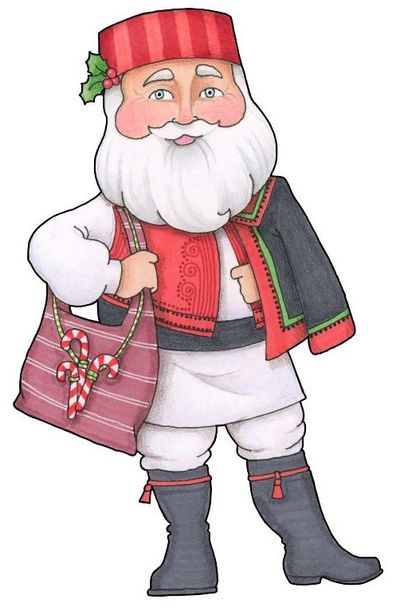
Croatia is a beautiful country located in Southeast Europe, along the Adriatic Sea. It is bordered by Slovenia to the northwest, Hungary to the northeast, Serbia to the east, Bosnia and Herzegovina to the southeast, and Montenegro to the south. Croatia's Christmas traditions are deeply rooted in Catholicism, with festive celebrations beginning in early December.
In Croatia, Santa Claus is known as Sveti Nikola (Saint Nicholas), and his feast day is celebrated on December 6. On the eve of St. Nicholas Day, children leave their shoes out by the door, and if they have been good, they wake up to find them filled with sweets and small gifts. If they’ve misbehaved, they might find a bundle of sticks left by Krampus, a mischievous creature who accompanies St. Nicholas.
Christmas itself is celebrated on December 25, and many families attend midnight Mass on Christmas Eve. Another figure in Croatian holiday traditions is Djed Božićnjak (Grandfather Christmas), who brings gifts on Christmas Eve or Christmas Day, similar to the modern image of Santa Claus. Families in Croatia also observe Advent, often lighting candles on Advent wreaths and attending church services in the weeks leading up to Christmas. Traditional meals for the season include roasted meats, sarma (cabbage rolls), and fritule (small doughnuts).
*Please note that this is a brief description, and while we strive for accuracy, the information provided may not be 100% guaranteed. If you notice any errors or have suggested edits, we encourage you to contact our office with your feedback.
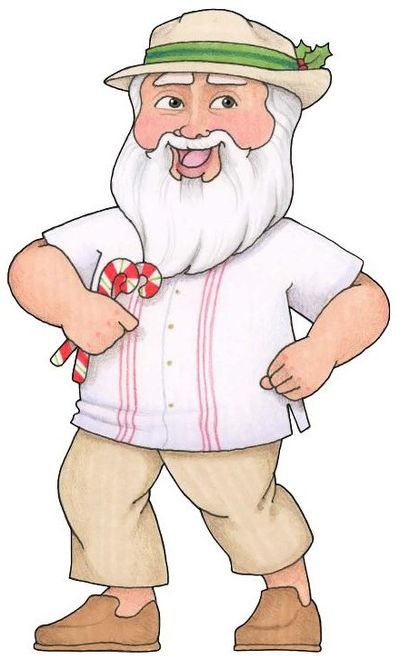
Cuba is an island nation located in the Caribbean, south of Florida and east of Mexico. It is known for its vibrant culture, music, and history, with traditions influenced by Spanish colonization and Afro-Caribbean heritage. While Christmas was banned for many years during the Cuban revolution, it was reinstated as a public holiday in 1997, and today it is widely celebrated, particularly in the Christian community.
In Cuba, Santa Claus is known as "Papá Noel," though he is not as central to Christmas traditions as in other countries. Christmas in Cuba focuses more on religious and family gatherings. The highlight of the Christmas season is Nochebuena, or Christmas Eve, when families gather for a large feast. Traditional foods include roasted pork (lechón asado), black beans, rice, and yucca. Cuban families often celebrate with music and dancing, and some attend Midnight Mass, known as "La Misa del Gallo."
While Papá Noel does play a role in gift-giving, it is typically reserved for smaller gifts exchanged within the family. In some regions, Christmas celebrations blend with local customs and Afro-Cuban traditions, creating a unique cultural expression during the holiday season.
*Please note that this is a brief description, and while we strive for accuracy, the information provided may not be 100% guaranteed. If you notice any errors or have suggested edits, we encourage you to contact our office with your feedback.
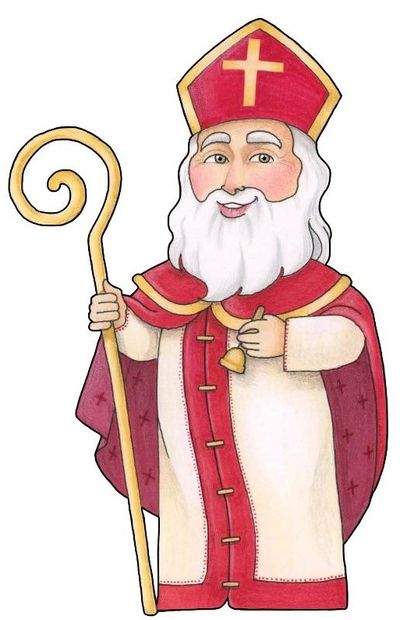
The Czech Republic is a landlocked country located in Central Europe, bordered by Germany to the west, Austria to the south, Slovakia to the east, and Poland to the north. Known for its rich cultural and architectural history, the Czech Republic has deep-rooted Christmas traditions that reflect its predominantly Christian heritage.
In the Czech Republic, Santa Claus is known as "Ježíšek" (the Baby Jesus), who is believed to bring gifts to children on Christmas Eve. The tradition of Ježíšek is unique, as he is not typically visualized like Santa Claus, but rather is seen as an invisible figure who magically brings presents under the Christmas tree. On December 24, families gather for a festive meal, which usually includes fish soup, fried carp, and potato salad. After dinner, children eagerly await the sound of a bell, signaling that Ježíšek has delivered their gifts.
St. Nicholas (Svatý Mikuláš) also plays a role in Czech holiday traditions. On the eve of St. Nicholas Day, December 5, St. Nicholas is said to visit children accompanied by an angel and a devil. The angel rewards well-behaved children with treats, while the devil is meant to scare the naughty ones, although no harm comes to them. This playful tradition is celebrated with small gifts and sweets.
*Please note that this is a brief description, and while we strive for accuracy, the information provided may not be 100% guaranteed. If you notice any errors or have suggested edits, we encourage you to contact our office with your feedback.
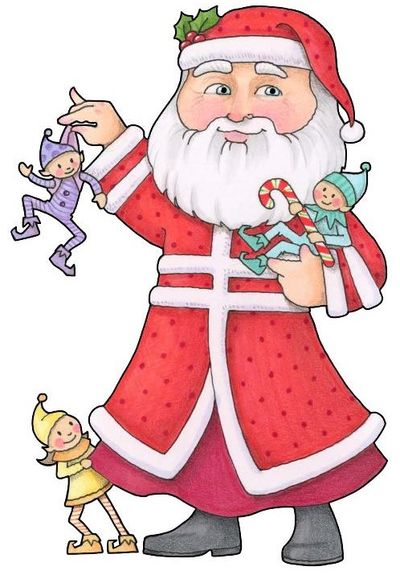
Denmark is a Scandinavian country located in Northern Europe, bordered by Germany to the south and surrounded by the North Sea and the Baltic Sea. It is known for its Viking history, hygge (a cozy lifestyle), and strong Christmas traditions, which are deeply rooted in Danish culture and Christianity.
In Denmark, Santa Claus is called "Julemanden," which translates to "The Yule Man." Julemanden is believed to live in Greenland, and he delivers presents to children on Christmas Eve, accompanied by his elves, known as "nisser." Danish children leave out rice pudding (risengrød) or porridge for the nisser, as it is believed to keep them happy and ensure that Julemanden will deliver gifts. Nisser are playful and mischievous figures in Danish folklore, and many families decorate their homes with nisser figurines during the holiday season.
Christmas celebrations in Denmark begin with Advent, and December is filled with festive gatherings, candlelight, and traditional foods. On Christmas Eve (December 24), families come together for a grand dinner, typically featuring roast pork, duck, or goose, along with red cabbage and caramelized potatoes. After dinner, the family sings carols and dances around the Christmas tree before Julemanden brings presents for the children.
*Please note that this is a brief description, and while we strive for accuracy, the information provided may not be 100% guaranteed. If you notice any errors or have suggested edits, we encourage you to contact our office with your feedback.

England is part of the United Kingdom, located on the island of Great Britain, with a rich history of holiday traditions that date back centuries. In England, Santa Claus is known as "Father Christmas." Unlike the typical image of Santa Claus with his North Pole workshop and reindeer, the character of Father Christmas in England is more rooted in folklore as a figure of merriment and generosity. Historically, he was depicted wearing a long green or red robe, symbolizing the arrival of the festive season, but modern images show him in the familiar red suit, influenced by the globalized version of Santa.
In England, Father Christmas delivers gifts to children on Christmas Eve, leaving them under the Christmas tree or in stockings hung by the fireplace. Children often leave out mince pies and a glass of milk (or sometimes brandy) for Father Christmas, along with a carrot for his reindeer.
Christmas in England is filled with traditions, such as decorating the Christmas tree, hanging mistletoe, and singing carols. The holiday meal typically includes roast turkey, stuffing, and Christmas pudding, which is often lit with brandy before serving. On Christmas afternoon, families across England tune in to watch the King's Christmas Message, a televised address that reflects on the year and shares well-wishes with citizens.
*Please note that this is a brief description, and while we strive for accuracy, the information provided may not be 100% guaranteed. If you notice any errors or have suggested edits, we encourage you to contact our office with your feedback.
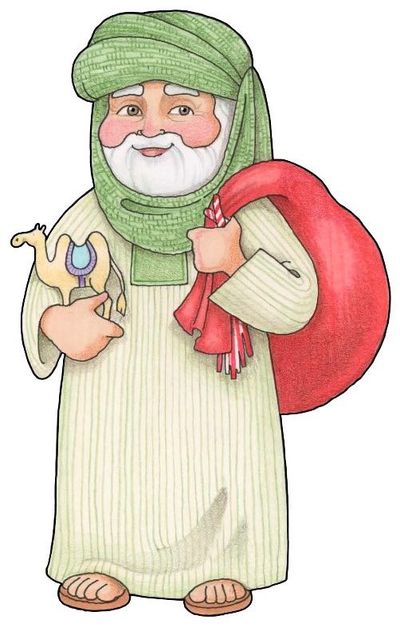
Egypt is a transcontinental country located in North Africa, with a small portion in the Middle East. It is known for its ancient history, particularly the pyramids and the Nile River, as well as its rich cultural diversity. Although Egypt is predominantly Muslim, there is a significant Christian population, particularly Coptic Christians, who have their own unique Christmas traditions.
In Egypt, Santa Claus is not as widely recognized as in other parts of the world, but among Christian communities, he is known as "Baba Noel" (Father Christmas). However, Christmas in Egypt is more focused on religious traditions than on Santa Claus. Coptic Christians, who belong to one of the oldest Christian denominations, celebrate Christmas on January 7, following the Julian calendar.
Christmas celebrations in Egypt are centered around the church and family. Coptic Christians observe a 43-day fast known as "Advent," during which they follow a vegan diet. This fast ends with a large feast after Christmas Eve Mass, which is held on the night of January 6. Traditional foods at the feast include lamb, rice, and various bread dishes. On Christmas Day, families come together to exchange gifts and enjoy festive meals. Children sometimes receive gifts from Baba Noel, but the focus remains on the religious aspect of the holiday.
*Please note that this is a brief description, and while we strive for accuracy, the information provided may not be 100% guaranteed. If you notice any errors or have suggested edits, we encourage you to contact our office with your feedback.
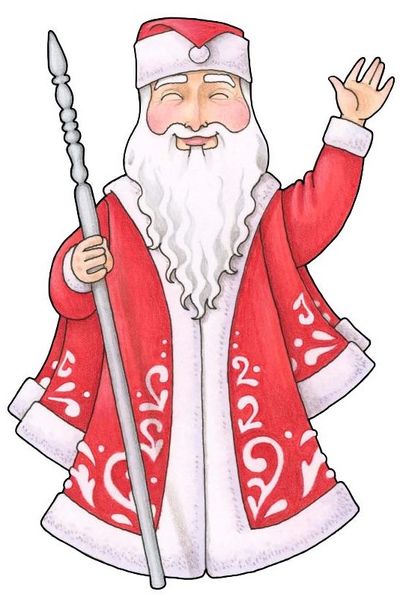
Estonia is a small country located in Northern Europe, bordered by the Baltic Sea, Russia, and Latvia. Known for its scenic forests, lakes, and medieval cities, Estonia has a rich cultural history with a mix of pagan and Christian traditions, especially around the holiday season.
In Estonia, Santa Claus is known as "Jõuluvana" (Yule Old Man), and he plays a central role in Christmas celebrations. Jõuluvana brings gifts to children on Christmas Eve, but unlike in many other countries, Estonian children must often recite a poem, sing a song, or perform a small task to receive their gifts. Estonian homes are beautifully decorated, and the holiday season is filled with traditional songs and gatherings.
Estonian Christmas traditions are deeply influenced by both ancient pagan Yule celebrations and Christian customs. Advent is observed, and Christmas Eve (December 24) is the most important day, marked by a family meal, typically including pork, sauerkraut, potatoes, and blood sausage. An important part of Estonian Christmas is also the tradition of visiting cemeteries to light candles for loved ones who have passed, creating a serene and reflective atmosphere.
Estonia’s connection to its winter heritage is also reflected in the tradition of going to the sauna on Christmas Eve, a practice that symbolizes cleansing and relaxation before the holiday meal and festivities.
*Please note that this is a brief description, and while we strive for accuracy, the information provided may not be 100% guaranteed. If you notice any errors or have suggested edits, we encourage you to contact our office with your feedback.

Finland is a Northern European country located in the region of Scandinavia, bordered by Sweden to the west, Norway to the north, Russia to the east, and the Gulf of Finland to the south. Known for its vast forests, thousands of lakes, and snowy winters, Finland has a rich tradition of Christmas celebrations deeply tied to its wintery landscape.
In Finland, Santa Claus is called "Joulupukki," which translates to "Christmas Goat." The name stems from ancient pagan traditions, but over time, Joulupukki evolved into the modern-day figure of Santa Claus, with his home believed to be in the northern region of Lapland, near the Arctic Circle. Finnish children write letters to Joulupukki, who visits homes on Christmas Eve to deliver presents in person. It’s customary for Joulupukki to knock on the door and ask, “Are there any well-behaved children here?” before handing out gifts.
Finnish Christmas traditions start with the Advent season and are marked by a festive, cozy atmosphere. Christmas Eve (December 24) is the most important day of celebration. Families share a meal that typically includes ham, casseroles, and rice pudding. It is also common for Finns to visit a sauna on Christmas Eve, a tradition that symbolizes purification before the holiday. Many families also visit cemeteries to light candles for their loved ones, creating a peaceful, glowing scene in the snow.
*Please note that this is a brief description, and while we strive for accuracy, the information provided may not be 100% guaranteed. If you notice any errors or have suggested edits, we encourage you to contact our office with your feedback.
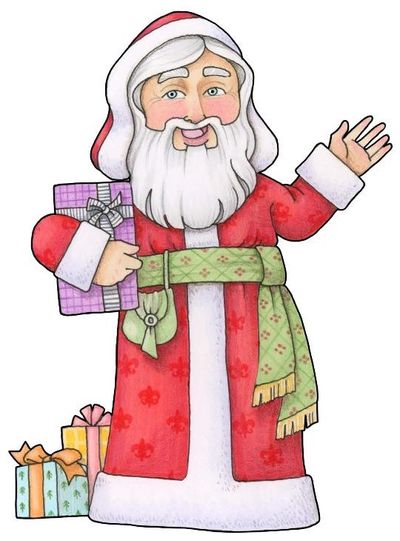
France is a Western European country known for its rich history, culture, and cuisine. It borders Belgium, Luxembourg, Germany, Switzerland, Italy, Monaco, Spain, and Andorra, with the Mediterranean Sea to the south and the Atlantic Ocean to the west. French Christmas traditions are deeply rooted in Catholicism, and the holiday season is filled with festive gatherings, decorations, and culinary delights.
In France, Santa Claus is known as "Père Noël," or Father Christmas. Père Noël brings gifts to children on Christmas Eve, placing them in shoes left by the fireplace or under the Christmas tree. In some regions of France, children also receive gifts from "Saint Nicolas," whose feast day is celebrated on December 6, particularly in the northeastern part of the country. Another character, Père Fouettard, accompanies Saint Nicolas, traditionally giving coal or warnings to misbehaving children.
Christmas in France is centered around family gatherings, with Christmas Eve (La Veille de Noël) being the highlight. After attending Midnight Mass, families enjoy a festive meal called "Le Réveillon." The meal varies by region but typically includes delicacies such as foie gras, oysters, roasted meats, and the famous "Bûche de Noël," a Yule log-shaped cake. Decorations, such as nativity scenes (crèches), are also very important in French homes, especially in Provence, where they feature detailed figurines called "santons."
*Please note that this is a brief description, and while we strive for accuracy, the information provided may not be 100% guaranteed. If you notice any errors or have suggested edits, we encourage you to contact our office with your feedback.
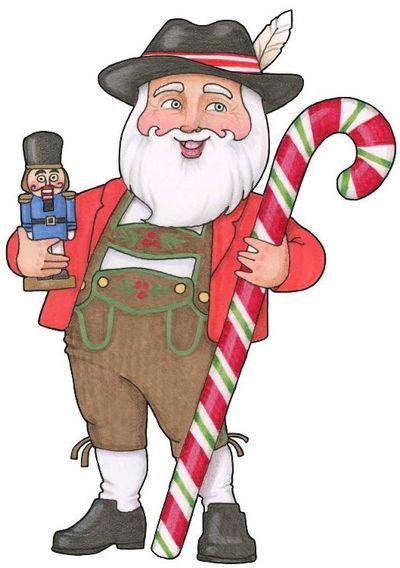
Germany is a country in Central Europe, bordered by Denmark to the north, Poland and the Czech Republic to the east, Austria and Switzerland to the south, and France, Luxembourg, Belgium, and the Netherlands to the west. Germany is known for its long-standing Christmas traditions, many of which have influenced celebrations around the world, including the Christmas tree.
In Germany, Santa Claus is known as "Weihnachtsmann," or the "Christmas Man." Weihnachtsmann brings gifts to children on Christmas Eve (December 24), and his role is similar to that of Santa Claus in other Western countries. However, in many regions, the "Christkind" (Christ Child) is the traditional gift-bringer. The Christkind, often depicted as an angelic figure with blonde hair, is believed to bring presents to children on Christmas Eve. The figure of Saint Nicholas (Sankt Nikolaus) is also significant in German culture, with his feast day on December 6. Saint Nicholas traditionally brings small gifts or sweets to children who leave out shoes or stockings for him.
Advent is an important part of the German Christmas season, with many homes displaying Advent wreaths (Adventskranz) and lighting a candle on each of the four Sundays leading up to Christmas. Christmas markets, or "Weihnachtsmärkte," are another beloved German tradition, where visitors enjoy mulled wine (Glühwein), roasted nuts, and handmade gifts in a festive atmosphere. On Christmas Eve, families gather for a special meal, often including goose, red cabbage, and dumplings, followed by attending a church service.
*Please note that this is a brief description, and while we strive for accuracy, the information provided may not be 100% guaranteed. If you notice any errors or have suggested edits, we encourage you to contact our office with your feedback.

Greece is a country located in Southern Europe, bordered by Albania, North Macedonia, Bulgaria, and Turkey, and surrounded by the Aegean, Ionian, and Mediterranean Seas. Known for its ancient history, mythology, and strong Orthodox Christian traditions, Greece celebrates Christmas with a focus on religious customs, family gatherings, and food.
In Greece, Santa Claus is called "Agios Vasilis" (Saint Basil), and he plays a central role in New Year’s celebrations rather than Christmas. Saint Basil is honored on January 1, which is when gifts are traditionally exchanged. Agios Vasilis is known for his generosity and kindness, and Greek children look forward to his visit on New Year’s Eve, leaving out shoes to be filled with gifts.
Christmas in Greece is celebrated on December 25, and it is one of the most important religious holidays. The holiday season begins on December 6, the Feast of Saint Nicholas, and continues until January 6, the Feast of Epiphany. On Christmas Eve, children often go from house to house singing "kalanta" (Christmas carols), and in return, they receive sweets or small gifts. Families attend church services and gather for a festive meal, which traditionally includes roast lamb or pork, along with a variety of sweets like melomakarona (honey cookies) and kourabiedes (almond shortbread).
One of the most unique Greek Christmas traditions is the "Christopsomo," or "Christ bread," which is baked in many households. The bread is often decorated with religious symbols and is blessed before being served during the Christmas meal, symbolizing the blessing of the home and family.
*Please note that this is a brief description, and while we strive for accuracy, the information provided may not be 100% guaranteed. If you notice any errors or have suggested edits, we encourage you to contact our office with your feedback.
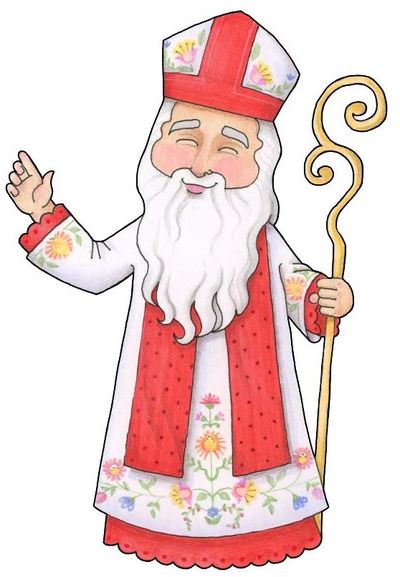
Hungary is a landlocked country in Central Europe, bordered by Slovakia to the north, Romania to the east, Serbia and Croatia to the south, Slovenia to the southwest, and Austria to the west. Known for its rich history and cultural traditions, Hungary has deep-rooted Christmas customs centered around family, food, and religious observance.
In Hungary, Santa Claus is called "Mikulás," and his feast day is celebrated on December 6. On the eve of St. Nicholas Day, children place their polished shoes on the windowsill, and Mikulás fills them with treats like chocolates, candies, and small toys if they've been good. However, if they've misbehaved, they might receive a bundle of twigs (called "virgács") from Krampusz, a devilish figure who accompanies Mikulás.
While Mikulás brings small gifts on December 6, the main Christmas gift-bringer in Hungary is "Jézuska" (the Baby Jesus). Jézuska is believed to bring presents on Christmas Eve, and the gifts are placed under the Christmas tree, which is usually decorated on that day. Christmas Eve (Szenteste) is the most important day of the season, and it is celebrated with a festive family dinner. Traditional dishes include fish soup (halászlé), stuffed cabbage (töltött káposzta), and various Christmas pastries like bejgli, a rolled pastry filled with poppy seeds or walnuts.
After dinner, families exchange gifts, often singing carols and attending Midnight Mass (Éjféli mise). The Christmas season in Hungary extends to Epiphany on January 6, and throughout this time, homes are decorated with nativity scenes and festive lights.
*Please note that this is a brief description, and while we strive for accuracy, the information provided may not be 100% guaranteed. If you notice any errors or have suggested edits, we encourage you to contact our office with your feedback.
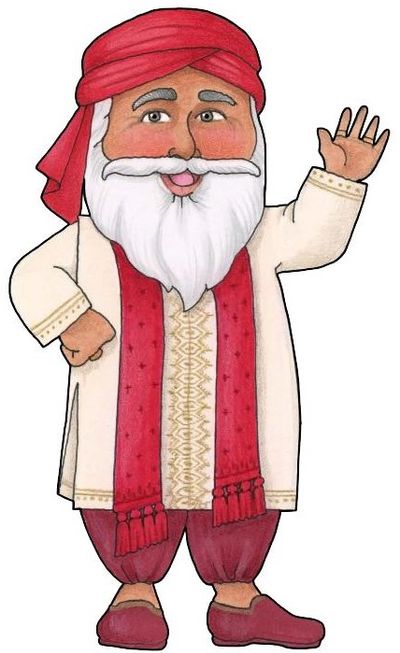
India is a vast and diverse country located in South Asia, bordered by Pakistan to the west, China and Nepal to the north, Bhutan to the northeast, and Bangladesh and Myanmar to the east. While Christmas is not a national holiday for all, it is an important celebration for Christians in India, especially in states with significant Christian populations like Goa, Kerala, and the northeastern regions.
In India, Santa Claus is known as "Christmas Baba" or "Santa Baba" in Hindi, though he is more commonly referred to as Santa Claus in urban areas. Much like in other parts of the world, Santa Baba is believed to bring gifts to children, and his arrival is eagerly awaited during the Christmas season. Children hang stockings or leave out shoes in the hope that Santa Baba will fill them with treats and small gifts on Christmas Eve.
Christmas in India is a blend of traditional Christian customs and local influences. Midnight Mass on Christmas Eve is a central part of the celebration, and churches are often beautifully decorated with lights, flowers, and nativity scenes. Families exchange gifts and enjoy a festive meal that might include special sweets like "kulkuls" (deep-fried, sugar-glazed pastries) and "neureos" (a kind of dumpling filled with coconut and dried fruit). In Goa, which has a strong Portuguese influence, families often enjoy a traditional Christmas meal of roast pork or vindaloo.
In many parts of India, especially in Christian neighborhoods, homes are decorated with colorful lights, candles, and star-shaped lanterns. Christmas trees, both real and artificial, are popular, and the festive atmosphere extends into the streets, where processions and carol singing take place.
*Please note that this is a brief description, and while we strive for accuracy, the information provided may not be 100% guaranteed. If you notice any errors or have suggested edits, we encourage you to contact our office with your feedback.
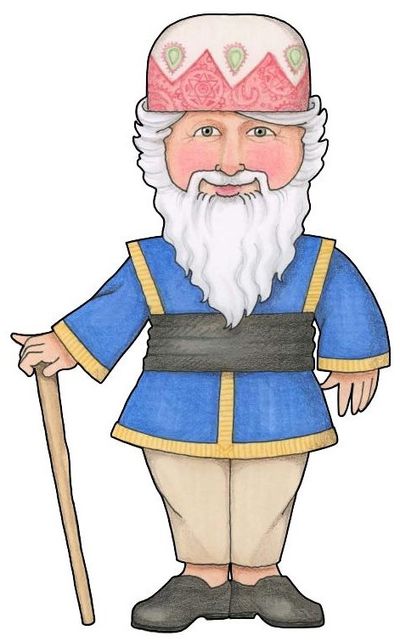
Iran, located in the Middle East, is bordered by countries including Iraq, Turkey, Armenia, Azerbaijan, Turkmenistan, Afghanistan, and Pakistan, with coastlines along the Caspian Sea and the Persian Gulf. Although Iran is predominantly an Islamic country, there is a small Christian population, primarily Armenian and Assyrian Christians, who celebrate Christmas.
In Iran, Santa Claus is known as "Baba Noel" (Father Christmas), though his role is more limited compared to other countries due to the small size of the Christian community. Baba Noel is sometimes said to bring gifts to children on Christmas Eve, but the primary focus of Christmas in Iran is religious observance rather than gift-giving. Iranian Christians, particularly Armenian Christians, celebrate Christmas according to the Julian calendar, with Christmas Day falling on January 6.
Leading up to Christmas, many Christian Iranians fast from meat for a few weeks, culminating in a grand Christmas Eve feast. The meal often includes traditional Iranian and Armenian dishes such as chicken stew, rice, and a variety of sweets. Churches are beautifully decorated for the occasion, and families attend a special Mass on Christmas Eve or Christmas morning. Afterward, they gather to celebrate with their loved ones and enjoy a festive meal.
While Christmas decorations are not widespread in public spaces, some Christian homes are adorned with Christmas trees, lights, and nativity scenes, blending both local and Christian traditions.
*Please note that this is a brief description, and while we strive for accuracy, the information provided may not be 100% guaranteed. If you notice any errors or have suggested edits, we encourage you to contact our office with your feedback.
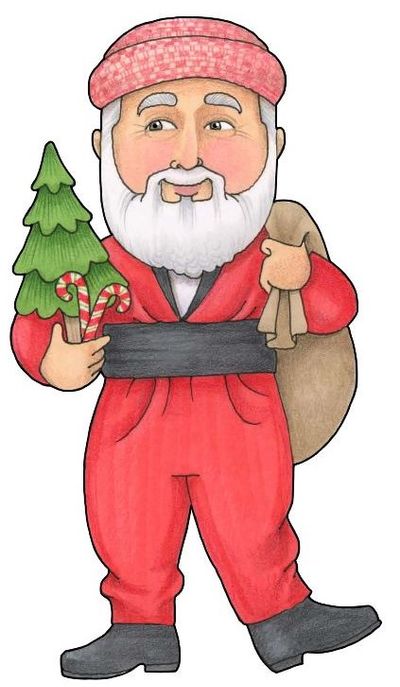
Iraq is located in the Middle East, bordered by Turkey to the north, Iran to the east, Kuwait to the southeast, Saudi Arabia to the south, Jordan to the southwest, and Syria to the west. Iraq has a long and rich history, with deep ties to early Christianity. Despite being predominantly Muslim today, there is a significant Christian population, primarily composed of Assyrian, Chaldean, and Armenian communities.
In Iraq, Santa Claus is known as "Baba Noel" (Father Christmas). While Baba Noel has become more familiar in modern times, the focus of Christmas celebrations in Iraq remains primarily religious. Iraqi Christians celebrate Christmas on December 25, while some follow the Eastern Orthodox tradition and celebrate it on January 7.
Christmas in Iraq is centered around attending Midnight Mass on Christmas Eve, where families come together to pray, sing hymns, and celebrate the birth of Christ. A unique tradition in many Iraqi Christian homes involves lighting a bonfire made from dried thorns. This ancient custom takes place after the Christmas Eve service, and if the thorns burn down to ashes, it is believed to bring good luck and blessings for the coming year. After the bonfire, families gather for a festive meal, often including dishes like dolma (stuffed grape leaves) and pacha (a traditional sheep's head soup).
While Christmas decorations, such as Christmas trees and lights, are becoming more popular, the holiday is still largely observed within Christian communities. Baba Noel is more commonly seen in urban areas and is known for bringing gifts to children, adding a modern touch to the traditional celebrations.
*Please note that this is a brief description, and while we strive for accuracy, the information provided may not be 100% guaranteed. If you notice any errors or have suggested edits, we encourage you to contact our office with your feedback.
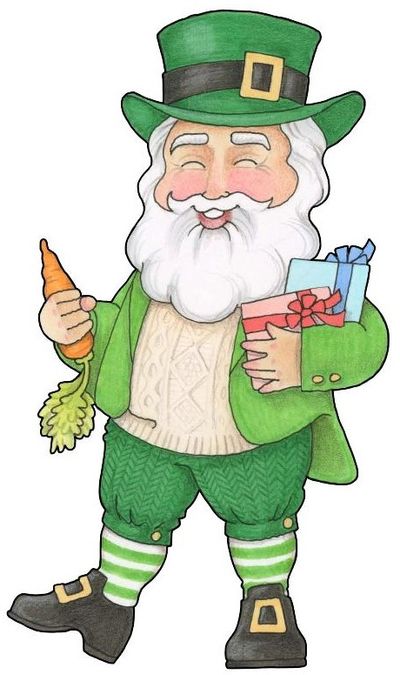
Ireland is an island nation in Northwestern Europe, known for its lush landscapes, Celtic heritage, and deep Christian roots. Christmas in Ireland is a cherished time filled with traditions, family gatherings, and religious observance, as the country has a strong Catholic influence.
In Ireland, Santa Claus is known as "Santy" or "Father Christmas." Irish children eagerly await his arrival on Christmas Eve, leaving out mince pies or Christmas cake for Santy, along with a glass of milk or sometimes whiskey, and a carrot for his reindeer. Santy is believed to visit during the night and leave gifts under the Christmas tree or in stockings hung by the fireplace.
The Christmas season in Ireland is long and festive, starting with Advent and continuing through to Epiphany (January 6), known as "Little Christmas" or "Women’s Christmas" (Nollaig na mBan). This day marks the official end of the holiday season, and traditionally, women would be given a rest from household duties while men take over.
Christmas Eve and Christmas Day are the heart of the celebrations. Families attend Midnight Mass on Christmas Eve, and on Christmas Day they gather for a big feast that typically includes roast turkey or goose, stuffing, ham, and a variety of desserts like Christmas pudding and mince pies. Another unique tradition in Ireland is placing a candle in the window on Christmas Eve, symbolizing welcoming Mary and Joseph or offering hospitality to travelers.
On St. Stephen's Day (December 26), also known as the Wren Day, some areas in Ireland celebrate by participating in the "Wren Boys" tradition, where groups of people, often in costume, go door-to-door singing and dancing to raise money for charity.
*Please note that this is a brief description, and while we strive for accuracy, the information provided may not be 100% guaranteed. If you notice any errors or have suggested edits, we encourage you to contact our office with your feedback.
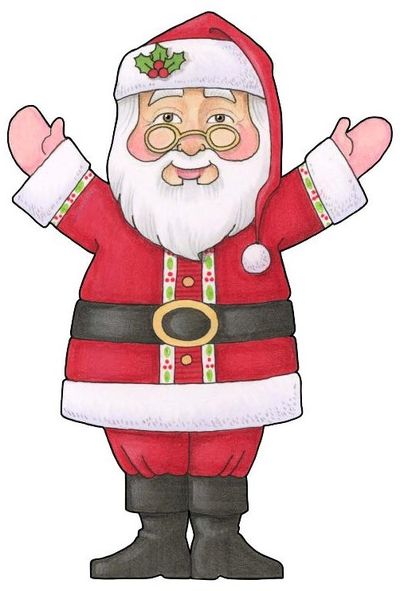
Israel is located in the Middle East, bordered by Lebanon to the north, Syria to the northeast, Jordan to the east, and Egypt to the southwest, with the Mediterranean Sea to the west. While Israel is primarily a Jewish country, it is home to a diverse population that includes Christians, many of whom celebrate Christmas, particularly in cities with significant Christian communities such as Nazareth, Bethlehem, and Jerusalem.
In Israel, Santa Claus is known as "Baba Noel" (Father Christmas), and he plays a role in the Christmas celebrations of Christian communities, especially in cities like Bethlehem, the birthplace of Jesus. While Baba Noel is a familiar figure in Christmas festivities, the primary focus in Israel is on the religious aspects of the holiday rather than gift-giving traditions.
Christmas in Israel is deeply tied to religious pilgrimage and the spiritual significance of the Holy Land. Thousands of Christian pilgrims travel to Bethlehem and Jerusalem during the Christmas season to celebrate at key religious sites. Midnight Mass is held on Christmas Eve in the Church of the Nativity in Bethlehem, which is believed to be the birthplace of Jesus, and it draws pilgrims and visitors from around the world.
In Christian households in Israel, Christmas is a time for family gatherings and festive meals, often featuring Middle Eastern dishes such as stuffed grape leaves, roasted lamb, and traditional sweets. Christmas trees and lights are more common in areas with larger Christian populations, and festivities often include singing carols and attending church services.
While Christmas is celebrated on December 25 by most Christian denominations, some Orthodox Christian communities in Israel observe Christmas on January 7, according to the Julian calendar.
*Please note that this is a brief description, and while we strive for accuracy, the information provided may not be 100% guaranteed. If you notice any errors or have suggested edits, we encourage you to contact our office with your feedback.
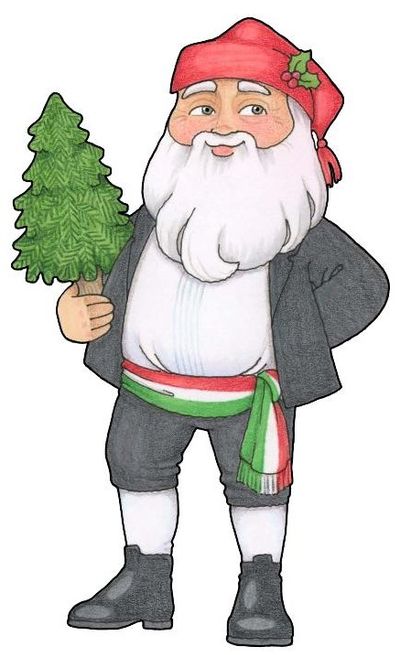
Italy, located in Southern Europe, is a country known for its rich history, culture, and strong Roman Catholic traditions. Christmas in Italy is a deeply religious and festive time, celebrated with family, food, and a variety of local customs that vary by region.
In Italy, Santa Claus is known as "Babbo Natale." Babbo Natale brings gifts to children on Christmas Eve or Christmas morning, much like in other parts of the world. However, in many regions of Italy, the more traditional gift-giver is "La Befana," a kind witch who visits on the eve of Epiphany (January 5) to leave gifts in children's stockings. According to legend, La Befana flies on her broomstick delivering treats to good children and coal to those who have misbehaved.
Christmas celebrations in Italy begin with Advent, and the holiday season extends to Epiphany (January 6), the day when the Three Wise Men are believed to have visited the baby Jesus. One of the most cherished Italian traditions is the nativity scene, or "presepe." Many families set up elaborate presepi in their homes, and towns often have public displays, especially in Naples, which is famous for its handcrafted nativity figures.
Christmas Eve (La Vigilia) is a special night for Italian families, who gather for a large meal, often centered around seafood, as meat is traditionally avoided. This meal is sometimes referred to as the "Feast of the Seven Fishes." After dinner, many Italians attend Midnight Mass to celebrate the birth of Jesus. On Christmas Day, the main meal includes pasta, roasted meats like lamb or turkey, and desserts such as panettone or pandoro, traditional Italian Christmas cakes.
Epiphany on January 6 is another key holiday in Italy, with children eagerly awaiting gifts from La Befana, and processions and celebrations often held to mark the occasion.
*Please note that this is a brief description, and while we strive for accuracy, the information provided may not be 100% guaranteed. If you notice any errors or have suggested edits, we encourage you to contact our office with your feedback.
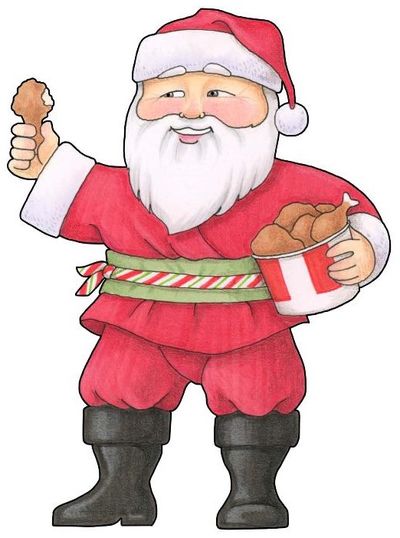
Japan is an island nation located in East Asia, known for its unique blend of ancient traditions and modern culture. While Christmas is not a national holiday in Japan, it has gained popularity in recent decades, particularly as a secular celebration focused on festive lights, gift-giving, and romantic outings.
In Japan, Santa Claus is known as "Santa-san," and he is seen as a cheerful, gift-bringing figure similar to the Western image of Santa Claus. However, Christmas in Japan is not a religious holiday for the majority of the population, as Japan’s Christian community is small. Instead, it is celebrated more as a festive and commercial event. Santa-san delivers gifts to children, and parents often exchange small presents with their kids, but the main focus is on spreading joy and creating a festive atmosphere.
One of the most unique aspects of Christmas in Japan is the tradition of eating Kentucky Fried Chicken (KFC) on Christmas Eve. This custom began in the 1970s due to a successful KFC marketing campaign, and today, it’s common for families to pre-order their Christmas Eve KFC meal well in advance. Another popular treat during the season is the Christmas cake, which is typically a light sponge cake with whipped cream and strawberries.
For couples, Christmas Eve in Japan is often seen as a romantic holiday, akin to Valentine's Day, with many going out for fancy dinners, exchanging gifts, and enjoying illuminated light displays called "illuminations."
While Christmas is celebrated on December 25, the real holiday spirit in Japan culminates with New Year’s (Shōgatsu), which is a time for family gatherings, reflection, and religious visits to shrines and temples.
*Please note that this is a brief description, and while we strive for accuracy, the information provided may not be 100% guaranteed. If you notice any errors or have suggested edits, we encourage you to contact our office with your feedback.

Jordan is a country located in the Middle East, bordered by Syria to the north, Iraq to the northeast, Saudi Arabia to the east and south, and Israel and Palestine to the west. While Jordan is predominantly Muslim, it has a significant Christian minority, and Christmas is widely celebrated within Christian communities, particularly in cities like Amman and Madaba.
In Jordan, Santa Claus is known as "Baba Noel" (Father Christmas), and he brings gifts to children, though his role is more prominent in urban areas and among Christian families. Baba Noel’s arrival is anticipated, especially by children who expect him to deliver gifts on Christmas Eve or Christmas morning. Christmas decorations, including Christmas trees, lights, and nativity scenes, can be found in Christian neighborhoods, and many malls and public spaces in major cities embrace the festive atmosphere by putting up lights and hosting Christmas events.
Christmas in Jordan revolves around religious observance, with many families attending Midnight Mass on Christmas Eve. Afterward, they gather for a festive meal that often includes traditional Middle Eastern dishes like roasted lamb, rice, and sweets such as baklava and ma'amoul (date-filled cookies). The holiday season is marked by a spirit of community, with families exchanging gifts and spending time together.
For Jordanian Christians, Christmas is also a time for charity and helping those in need. Churches and community groups often organize food drives and charitable events during the holiday season. While Christmas is celebrated on December 25 by many denominations, some Eastern Orthodox Christians in Jordan observe it on January 7.
*Please note that this is a brief description, and while we strive for accuracy, the information provided may not be 100% guaranteed. If you notice any errors or have suggested edits, we encourage you to contact our office with your feedback.
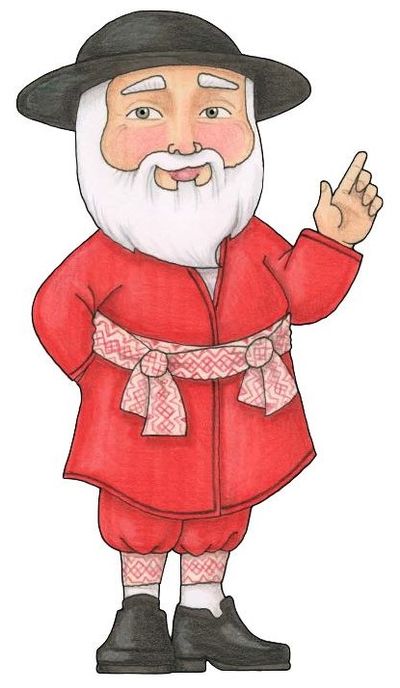
Latvia is a small country located in Northern Europe, one of the three Baltic states, bordered by Estonia to the north, Lithuania to the south, Russia to the east, and the Baltic Sea to the west. Latvia has a rich cultural history, and its Christmas traditions are influenced by both its pagan roots and Christian customs.
In Latvia, Santa Claus is known as "Ziemassvētku vecītis," which translates to "Old Man Christmas." Ziemassvētku vecītis brings gifts to children, typically over the course of the 12 Days of Christmas, which start on December 24 and end on January 6. A unique tradition in Latvia is that children are often expected to recite a poem, sing a song, or perform a small task before receiving their gifts, making the experience more interactive.
Latvia has a deep connection to the Christmas tree, as it is believed that one of the first decorated Christmas trees originated in Riga, the capital, in the early 16th century. Christmas Eve (December 24) is the most important day of the holiday season. Families gather to share a traditional meal that typically includes dishes like pork, sauerkraut, potatoes, peas, and various sweets. Another important tradition is the baking of piparkūkas, which are gingerbread cookies, often shaped and decorated for the season.
Latvians also honor the winter solstice, reflecting the country's pagan history, with customs that include lighting candles and fires, symbolizing the return of light after the longest night of the year. After the Christmas feast, many families attend Midnight Mass, blending the religious aspects of the holiday with its long-standing folk traditions.
*Please note that this is a brief description, and while we strive for accuracy, the information provided may not be 100% guaranteed. If you notice any errors or have suggested edits, we encourage you to contact our office with your feedback.
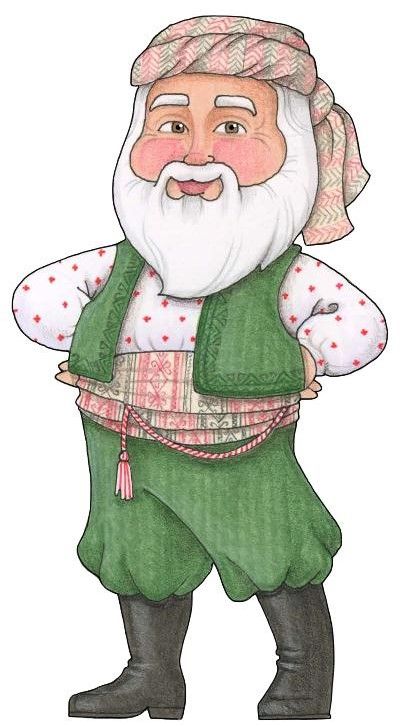
Lebanon is a small Middle Eastern country located on the eastern shore of the Mediterranean Sea, bordered by Syria to the north and east and Israel to the south. Despite its predominantly Muslim population, Lebanon has a significant Christian community, particularly Maronite Catholics, and Christmas is widely celebrated throughout the country, often blending religious and cultural traditions.
In Lebanon, Santa Claus is known as "Papa Noël." Papa Noël is an important figure for children, who eagerly await his arrival on Christmas Eve or Christmas morning. Lebanese homes and public spaces are often beautifully decorated with Christmas trees, lights, and nativity scenes. Christmas markets and events are held in many cities, particularly in Beirut, creating a festive atmosphere.
The holiday season begins with Advent, and many Christian families in Lebanon fast in the weeks leading up to Christmas. Christmas Eve (December 24) is the most significant part of the celebration, where families gather for a large meal. Traditional Lebanese Christmas dishes include kibbeh, stuffed grape leaves, and roasted meats, often followed by sweets such as ma'amoul (date-filled cookies). After dinner, many attend Midnight Mass, particularly in the Christian-majority areas, to celebrate the birth of Jesus.
One of the unique traditions in Lebanon is the planting of seeds, such as wheat, chickpeas, or lentils, in small cotton balls during the lead-up to Christmas. These seeds sprout by Christmas and are used to decorate nativity scenes, symbolizing new life and the hope of the holiday season.
Christmas celebrations in Lebanon extend through Epiphany on January 6, when many families exchange gifts and continue to enjoy the festive season.
*Please note that this is a brief description, and while we strive for accuracy, the information provided may not be 100% guaranteed. If you notice any errors or have suggested edits, we encourage you to contact our office with your feedback.
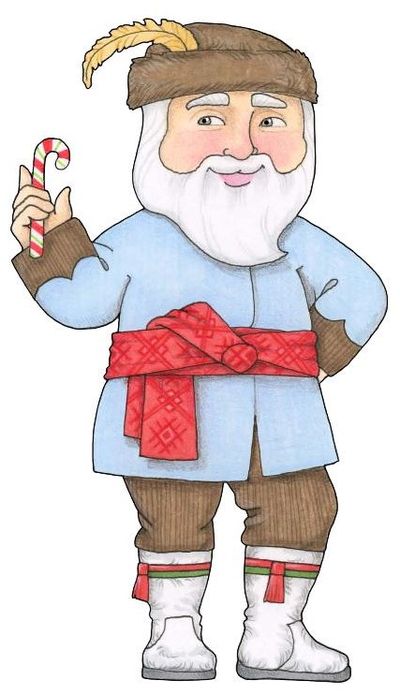
Lithuania is a country located in Northern Europe, one of the three Baltic states, bordered by Latvia to the north, Belarus to the east and south, Poland to the southwest, and the Baltic Sea to the west. Christmas is an important holiday in Lithuania, blending both Christian and pagan traditions with a focus on family, food, and reflection.
In Lithuania, Santa Claus is called "Kalėdų Senelis," which translates to "Old Man Christmas." Kalėdų Senelis brings gifts to children on Christmas Eve or Christmas morning. In some families, children must recite a poem, sing a song, or perform a small task before receiving their gifts, similar to traditions in other Baltic countries.
Christmas Eve, known as "Kūčios," is the most important day of celebration in Lithuania. It is a solemn and reflective occasion, focused on family gatherings and spiritual preparation. Lithuanian families traditionally prepare a 12-dish meatless meal, symbolizing the 12 apostles. The dishes often include herring, mushrooms, potatoes, sauerkraut, and kūčiukai—small, slightly sweet pastries soaked in poppy seed milk. The Kūčios meal begins when the first star appears in the sky, symbolizing the Star of Bethlehem.
An important part of the celebration is the sharing of "plotkelė" (unleavened bread wafers), similar to the Christian communion wafer, which family members break and share with each other while offering good wishes for the coming year.
Christmas Day itself is a time for relaxation and religious observance. Many Lithuanians attend church services and gather with family. Christmas trees are a central part of the decorations, and in larger cities, such as Vilnius, the capital, elaborate light displays and festive markets add to the holiday spirit. The Christmas season in Lithuania extends through Epiphany (January 6).
*Please note that this is a brief description, and while we strive for accuracy, the information provided may not be 100% guaranteed. If you notice any errors or have suggested edits, we encourage you to contact our office with your feedback.
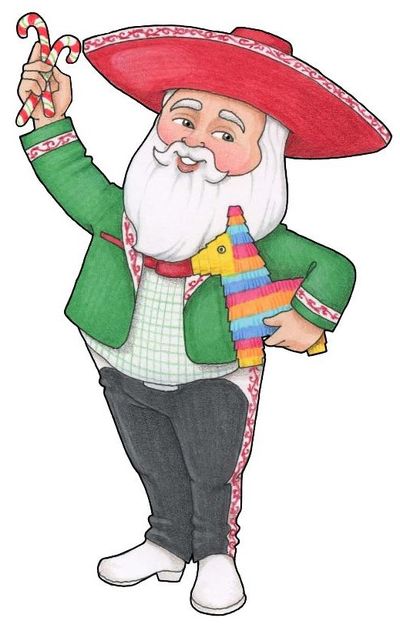
Mexico is a country in North America, bordered by the United States to the north, Belize and Guatemala to the south, the Pacific Ocean to the west, and the Gulf of Mexico and Caribbean Sea to the east. Christmas in Mexico is a vibrant and deeply religious holiday, influenced by the country’s rich Catholic heritage and cultural traditions, with celebrations starting in early December and continuing through the beginning of January.
In Mexico, Santa Claus is known as "Santa Clós," but he is not as central to Christmas traditions as in some other countries. While Santa Clós does bring gifts to children, especially in urban areas, Mexican Christmas traditions focus more on religious observances and family gatherings. Another important figure is "El Niño Dios" (the Baby Jesus), who is believed to bring gifts on Christmas Eve.
One of the most distinctive Mexican Christmas traditions is "Las Posadas," a reenactment of Mary and Joseph’s search for a place to stay in Bethlehem. Las Posadas take place over nine nights from December 16 to 24, with families and communities gathering for processions, songs, and prayers, followed by feasts and festivities. Children often break piñatas shaped like stars, filled with sweets and treats.
Christmas Eve (Nochebuena) is the most important part of the holiday season in Mexico. Families gather for a late-night meal, which often includes dishes like tamales, bacalao (salted cod), and pozole, a traditional hominy stew. After dinner, many attend Midnight Mass, known as "Misa de Gallo" (Rooster’s Mass), to celebrate the birth of Christ.
On January 6, Mexicans celebrate "Día de Reyes" (Three Kings’ Day), when children receive gifts from the Three Wise Men. A special cake called "Rosca de Reyes" is baked, with a small figurine of the Baby Jesus hidden inside. Whoever finds the figurine is expected to host a celebration on "Día de la Candelaria" (Candlemas) on February 2, closing out the Christmas season.
Sponsored by:
*Please note that this is a brief description, and while we strive for accuracy, the information provided may not be 100% guaranteed. If you notice any errors or have suggested edits, we encourage you to contact our office with your feedback.

The Netherlands is a country located in Northwestern Europe, bordered by Germany to the east, Belgium to the south, and the North Sea to the north and west. Known for its canals, tulip fields, and windmills, the Netherlands has unique Christmas traditions that blend Dutch folklore with Christian customs.
In the Netherlands, Santa Claus is called "Sinterklaas," and he plays a central role in the holiday season. Sinterklaas arrives from Spain in mid-November, and his feast day is celebrated on December 5, known as "Sinterklaasavond" or "Pakjesavond" (Present Evening). On this evening, Sinterklaas delivers gifts to children who have left out their shoes, often filled with carrots or hay for Sinterklaas’s horse. In return, they receive gifts and treats such as chocolate letters, marzipan, and pepernoten (spiced cookies). Sinterklaas is accompanied by his helpers, traditionally called "Zwarte Piet," although the portrayal of these characters has become a subject of discussion and change in recent years.
While Sinterklaas is the primary gift-giver, Christmas (Kerstmis) is still celebrated on December 25 and 26 in a more religious and family-oriented way. Christmas in the Netherlands is focused on family gatherings and festive meals rather than presents. Traditional foods include roast meats, baked goods, and "kerststol," a sweet bread filled with dried fruits and marzipan. Many families attend church services on Christmas Eve or Christmas Day.
A notable Dutch Christmas tradition is the "kerstmarkt" (Christmas market), which features stalls selling handmade goods, seasonal treats, and decorations. The Christmas season in the Netherlands extends to New Year's Eve, known as "Oud en Nieuw," and is marked by fireworks and festive celebrations.
*Please note that this is a brief description, and while we strive for accuracy, the information provided may not be 100% guaranteed. If you notice any errors or have suggested edits, we encourage you to contact our office with your feedback.
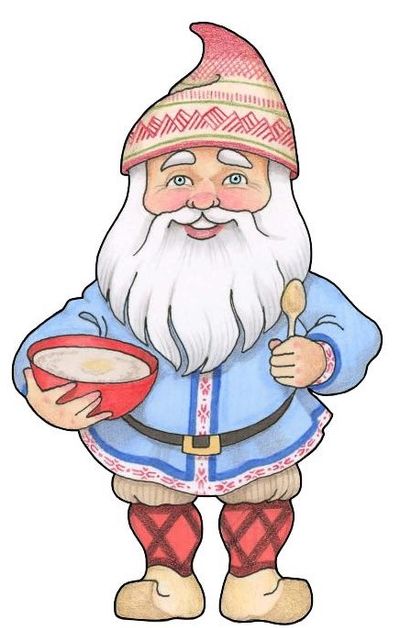
Norway is a Scandinavian country located in Northern Europe, bordered by Sweden, Finland, and Russia to the east and the North Atlantic Ocean to the west. Known for its stunning fjords, snowy winters, and rich Viking history, Norway has a deep connection to nature, which is reflected in its Christmas traditions.
In Norway, Santa Claus is known as "Julenissen." Julenissen is a figure derived from both Norse mythology and Christian traditions, and he delivers gifts to children on Christmas Eve (December 24). Julenissen is often depicted as a friendly, gnome-like figure who lives in the woods and watches over farms. Norwegian children eagerly anticipate his visit and may leave out porridge (risengrynsgrøt) for him, as it is said to be his favorite food.
Christmas in Norway, known as "Jul," is a festive season filled with traditions that begin with Advent. Norwegian homes are decorated with lights, candles, and Christmas trees, and many families bake traditional cookies known as "julekaker" in preparation for the holidays. One important custom is the "Julbord," a lavish Christmas meal that includes dishes like "ribbe" (roast pork belly), "pinnekjøtt" (dried lamb ribs), lutefisk (dried fish), potatoes, and various side dishes. On Christmas Eve, families gather for this meal and exchange gifts, which are often placed under the Christmas tree.
Another beloved tradition is the "Julebukk," where children, dressed as characters from Christmas stories or folklore, go door to door singing carols and receiving small treats in return. This is similar to Halloween-style trick-or-treating, but with a festive Christmas twist.
Norwegians also celebrate "Little Christmas Eve" (Lille Julaften) on December 23, a day for final preparations and decorating the Christmas tree. The Christmas season in Norway lasts until January 6, when "Epiphany" or "Twelfth Night" is celebrated.
Sponsored by:
Beech Creative Group
*Please note that this is a brief description, and while we strive for accuracy, the information provided may not be 100% guaranteed. If you notice any errors or have suggested edits, we encourage you to contact our office with your feedback.
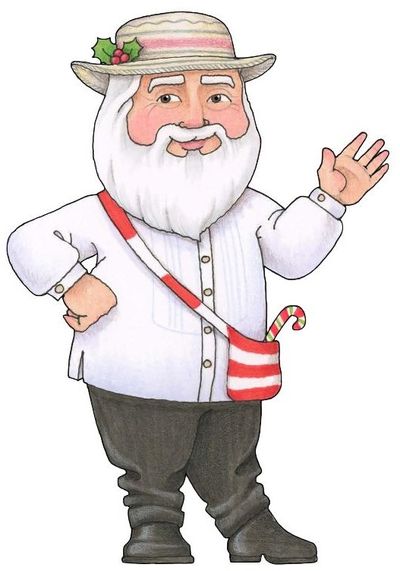
Panama is a country located in Central America, bordered by Costa Rica to the west, Colombia to the southeast, the Caribbean Sea to the north, and the Pacific Ocean to the south. Known for its tropical climate and cultural diversity, Panama has vibrant Christmas celebrations that combine traditional religious customs with local cultural influences.
In Panama, Santa Claus is known as "Papá Noel," and he is a familiar figure in the country’s Christmas traditions. Like in many other places, Papá Noel is believed to deliver gifts to children on Christmas Eve or Christmas morning. While Papá Noel is a part of modern celebrations, Christmas in Panama focuses heavily on religious observance, family gatherings, and festive meals.
Christmas in Panama begins with the start of Advent, and many families participate in special church services. On Christmas Eve (Nochebuena), families gather for a large meal, which usually takes place after attending Midnight Mass. Traditional Panamanian Christmas foods include "tamales," "arroz con guandú" (rice with pigeon peas), "pavo" (roast turkey), and sweets like "dulce de frutas" (fruitcake). Fireworks are a common sight during Christmas Eve, lighting up the night as families enjoy the celebrations.
A unique Panamanian tradition is the creation of elaborate nativity scenes (known as "Nacimiento"), which are often displayed in homes and churches. These nativity scenes can be large and detailed, depicting not only the birth of Jesus but also other biblical scenes.
Another important part of the holiday season in Panama is "Día de los Reyes" (Three Kings' Day) on January 6. This day marks the arrival of the Three Wise Men, and in some parts of Panama, children receive gifts in celebration of the occasion, extending the festive season into the new year.
*Please note that this is a brief description, and while we strive for accuracy, the information provided may not be 100% guaranteed. If you notice any errors or have suggested edits, we encourage you to contact our office with your feedback.
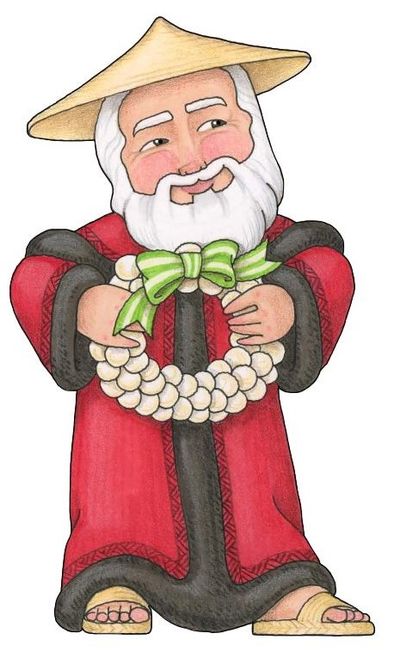
The Philippines is an archipelago located in Southeast Asia, consisting of more than 7,000 islands. As the only predominantly Christian nation in Asia, with a strong Catholic tradition, the Philippines is known for having one of the longest and most festive Christmas celebrations in the world.
In the Philippines, Santa Claus is known as "Santa Klaus" or "Father Christmas," and while he has become a popular figure due to Western influence, the true spirit of Christmas in the Philippines centers around religious traditions and family gatherings. Filipino children eagerly await Santa Klaus to bring gifts, but the focus is more on the celebration of the birth of Jesus.
Christmas celebrations in the Philippines begin as early as September, when the "ber" months (months ending in “-ber”) signal the start of the holiday season. One of the most important traditions is the "Simbang Gabi," a series of nine early-morning Masses that begin on December 16 and end on Christmas Eve. Attending Simbang Gabi is seen as a way to prepare spiritually for Christmas, and it is believed that if a person completes all nine Masses, their prayers will be granted.
Christmas Eve in the Philippines is celebrated with "Noche Buena," a large feast shared after attending Midnight Mass. Families gather to enjoy traditional dishes such as "lechon" (roast pig), "hamon" (Christmas ham), "queso de bola" (edam cheese), and various sweets like "puto bumbong" (purple rice cakes) and "bibingka" (rice cakes). It is a time for joyful family reunions, with food, music, and gift exchanges playing a central role.
One of the most beloved Filipino Christmas symbols is the "parol," a star-shaped lantern that represents the Star of Bethlehem. Parols are hung outside homes, in churches, and on streets, symbolizing hope and the guiding light of faith.
The Christmas season in the Philippines extends beyond Christmas Day, with the celebration of "Three Kings' Day" or "Día de los Reyes" on January 6, marking the official end of the festive period.
*Please note that this is a brief description, and while we strive for accuracy, the information provided may not be 100% guaranteed. If you notice any errors or have suggested edits, we encourage you to contact our office with your feedback.
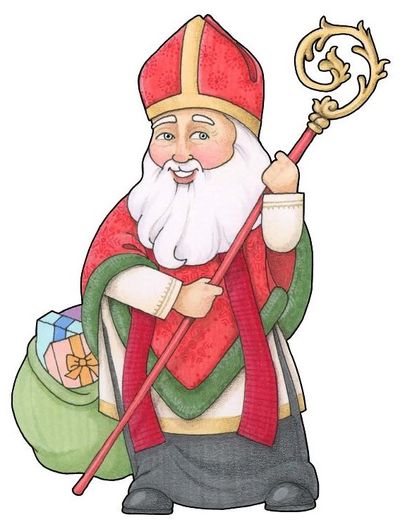
Poland is a country in Central Europe, bordered by Germany to the west, the Czech Republic and Slovakia to the south, Ukraine and Belarus to the east, and Lithuania and the Baltic Sea to the north. As a predominantly Catholic nation, Christmas in Poland is a deeply religious and family-centered holiday, filled with unique customs and traditions that have been passed down through generations.
In Poland, Santa Claus is known as "Święty Mikołaj" (Saint Nicholas). He plays a role in the holiday season, especially on December 6, which is St. Nicholas Day, when children receive small gifts, usually placed in shoes or stockings. However, the main Christmas gift-giver in some regions is the "Gwiazdor" (the Star Man) or the "Dzieciątko" (Christ Child), who is believed to bring gifts on Christmas Eve.
Christmas Eve, known as "Wigilia," is the most important part of the holiday season in Poland. The evening begins when the first star appears in the sky, symbolizing the Star of Bethlehem. Families then gather around the table for a special meal that traditionally consists of 12 meatless dishes, representing the 12 apostles. The meal often includes dishes such as barszcz (beetroot soup) with uszka (dumplings), pierogi (filled dumplings), carp, and herring. One of the central customs is the breaking of the "opłatek" (a thin, unleavened wafer), which family members share while offering each other good wishes for the coming year.
After the Wigilia meal, families exchange gifts and may sing Christmas carols (known as "kolędy"). Many Poles then attend Midnight Mass, known as "Pasterka," which commemorates the shepherds who were the first to visit the newborn Jesus. Christmas celebrations continue through December 25 and 26, with more family gatherings and festive meals. The Christmas season in Poland extends to Epiphany (January 6), which is marked by special church services and processions.
*Please note that this is a brief description, and while we strive for accuracy, the information provided may not be 100% guaranteed. If you notice any errors or have suggested edits, we encourage you to contact our office with your feedback.*
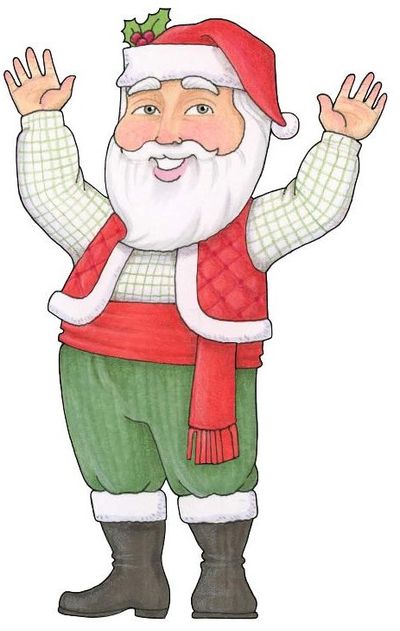
Portugal, located on the Iberian Peninsula in Southern Europe, celebrates Christmas with warmth, family traditions, and deep-rooted Catholic customs. In Portugal, Santa Claus is known as "Pai Natal," and he plays a central role in the country’s holiday celebrations. However, traditionally, the Christ Child, known as "Menino Jesus," was believed to bring gifts to children on Christmas Eve. Today, it’s common to see both Pai Natal and Menino Jesus symbolizing gift-giving, with Pai Natal now more popular in urban areas.
Christmas Eve, or "Véspera de Natal," is the most important part of the holiday season in Portugal. Families gather for the "Consoada," a traditional meal that includes "bacalhau" (salted cod), potatoes, and cabbage, followed by desserts like "filhós" (fried dough pastries), "rabanadas" (Portuguese-style French toast), and "bolo rei" (King’s Cake), a fruitcake enjoyed throughout the season. After dinner, many families attend Midnight Mass, known as "Missa do Galo" (Rooster’s Mass), to celebrate the birth of Jesus.
Pai Natal traditionally wears a red suit similar to Santa Claus in other Western countries, though in some areas, he is depicted in local attire. Portuguese homes are often decorated with nativity scenes, or "presépios," which are central to the holiday decorations, as well as Christmas trees adorned with lights. The Christmas season extends through Epiphany on January 6, known as "Dia de Reis" (Three Kings’ Day), when families celebrate with additional gatherings and sweets.
*Please note that this is a brief description, and while we strive for accuracy, the information provided may not be 100% guaranteed. If you notice any errors or have suggested edits, we encourage you to contact our office with your feedback.
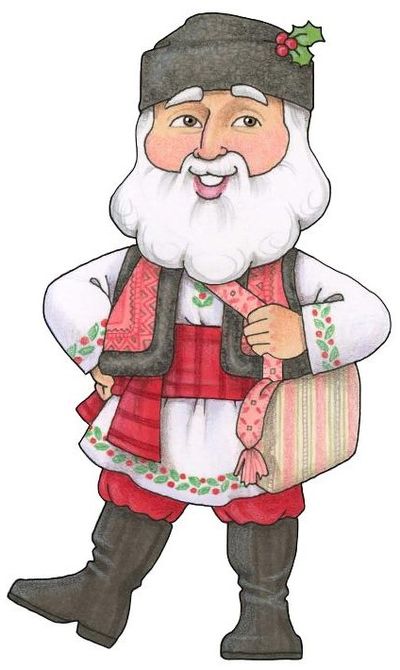
Romania is located in Eastern Europe, bordered by Ukraine to the north, Bulgaria to the south, Serbia to the southwest, Hungary to the west, and Moldova to the east. Known for its picturesque landscapes, medieval castles, and rich folklore, Romania is predominantly Orthodox Christian, and Christmas is one of the most important holidays, deeply rooted in religious and folk traditions.
In Romania, Santa Claus is known as "Moș Crăciun," which translates to "Old Man Christmas." Moș Crăciun is the gift-bringer who arrives on Christmas Eve (December 24), leaving presents for children under the Christmas tree. Children often sing Christmas carols (colinde) to welcome Moș Crăciun and sometimes recite poems in exchange for their gifts. This figure is central to the modern Christmas tradition, although Romania also celebrates Saint Nicholas (Moș Nicolae) on December 6, when children leave their shoes out to be filled with small treats if they’ve been good, or twigs if they’ve misbehaved.
Christmas in Romania officially begins with Advent, and many traditions are observed throughout the season. One of the most important customs is the singing of carols (colindători) on Christmas Eve. Groups of children and adults go door-to-door singing carols in exchange for sweets, fruit, or money. The carols often include religious themes or tales from Romanian folklore, celebrating the birth of Christ and the joy of the season.
On Christmas Eve, families gather for a special meal, which includes traditional Romanian dishes such as "sarmale" (cabbage rolls stuffed with minced meat and rice), "cozonac" (a sweet bread filled with nuts, cocoa, or Turkish delight), and pork-based dishes, as the period of Advent fasting ends. Pork is central to Christmas feasts in Romania, often symbolizing abundance and family unity.
Many Romanian families attend church services on Christmas Day to celebrate the birth of Jesus, and the festive season extends to New Year’s and Epiphany (January 6), which is marked by more religious celebrations and traditions that reflect both Christian and local folk heritage.
*Please note that this is a brief description, and while we strive for accuracy, the information provided may not be 100% guaranteed. If you notice any errors or have suggested edits, we encourage you to contact our office with your feedback.
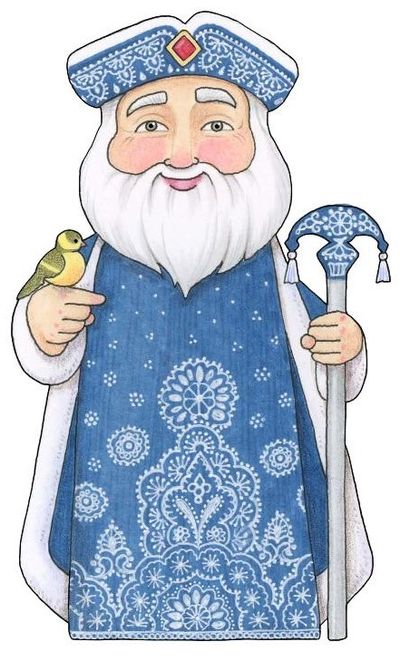
Russia is the largest country in the world, spanning Eastern Europe and Northern Asia. It has a rich cultural and religious history, with the Russian Orthodox Church playing a central role in many traditional celebrations. Due to its adherence to the Julian calendar, Christmas in Russia is celebrated on January 7, rather than December 25, which is a key distinction from many Western countries.
In Russia, the traditional Christmas figure is "Ded Moroz" (Grandfather Frost), who delivers gifts to children, often on New Year’s Eve rather than Christmas Day. Ded Moroz is typically accompanied by his granddaughter, "Snegurochka" (the Snow Maiden), who helps him distribute gifts. Ded Moroz differs from Western Santa Claus in that he wears a long, fur-trimmed coat and travels in a troika (a sleigh pulled by three horses). The focus on New Year’s as the main gift-giving holiday dates back to Soviet times, when Christmas celebrations were suppressed.
Russian Christmas is primarily a religious holiday, with celebrations beginning on Christmas Eve (January 6). The day before Christmas, many Russians observe a strict fast that is broken with a festive meal following the first star’s appearance in the sky, symbolizing the Star of Bethlehem. The traditional Christmas Eve meal, called "Holy Supper," often includes 12 dishes representing the 12 apostles. Popular foods include "kutya" (a sweet grain pudding made from wheat or barley, honey, and poppy seeds), borscht, and fish. Meat is typically avoided, as the Orthodox Church encourages fasting until Christmas Day.
Midnight Mass is one of the most important events of Russian Christmas, with many people attending services in churches across the country, especially at Moscow’s Christ the Savior Cathedral or St. Petersburg’s Kazan Cathedral. Homes and churches are decorated with icons and candles to celebrate the birth of Christ.
Though Christmas is gaining popularity in modern Russia, New Year’s Eve remains the more festive, widely celebrated holiday. The holiday season in Russia continues through Epiphany (January 19), when many Russians participate in the tradition of ice bathing, dipping into freezing rivers or lakes to commemorate the baptism of Jesus in the Jordan River.
*Please note that this is a brief description, and while we strive for accuracy, the information provided may not be 100% guaranteed. If you notice any errors or have suggested edits, we encourage you to contact our office with your feedback.
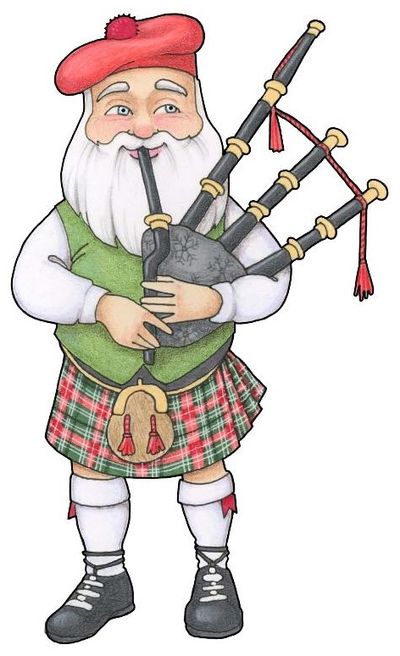
Scotland is part of the United Kingdom, located in the northern part of the island of Great Britain. Known for its rugged landscapes, rich history, and distinct cultural traditions, Scotland has a unique approach to Christmas that reflects both its Christian heritage and ancient customs. Historically, Christmas celebrations were banned for centuries after the Reformation, but today, it is widely celebrated, though Hogmanay (New Year’s Eve) still holds more significance for many Scots.
In Scotland, Santa Claus is known as "Santa" or "Father Christmas." Much like in other parts of the world, Santa brings gifts to children on Christmas Eve, which are opened on Christmas morning. Children often leave out mince pies and a dram of whisky for Santa, along with a carrot for his reindeer. In more rural areas, the connection to local folklore and traditions may still be felt, though the modern, globalized version of Christmas is dominant.
Christmas Day in Scotland is celebrated with family gatherings and a festive meal. Traditional dishes often include roast turkey, roast beef, or goose, along with stuffing, potatoes, and Brussels sprouts. A rich Christmas pudding or "Clootie Dumpling" (a steamed fruit pudding) is often served for dessert. Crackers, which are small festive gifts pulled by two people to reveal a prize, are also part of the Christmas meal tradition in Scotland.
While Christmas is celebrated on December 25, the bigger holiday celebration in Scotland is Hogmanay, the Scottish New Year, which is filled with unique customs such as "first-footing." This tradition involves visiting friends and family after midnight, with the first person to enter the house (the "first-footer") bringing gifts like coal or shortbread to bring good luck for the coming year.
Although Christmas celebrations have become more widespread in modern times, Hogmanay continues to be a focal point of the holiday season in Scotland, with grand parties, fireworks, and traditional music, making Scotland's holiday season truly unique. *Please note that this is a brief description, and while we strive for accuracy, the information provided may not be 100% guaranteed. If you notice any errors or have suggested edits, we encourage you to contact our office with your feedback.*
*Please note that this is a brief description, and while we strive for accuracy, the information provided may not be 100% guaranteed. If you notice any errors or have suggested edits, we encourage you to contact our office with your feedback.
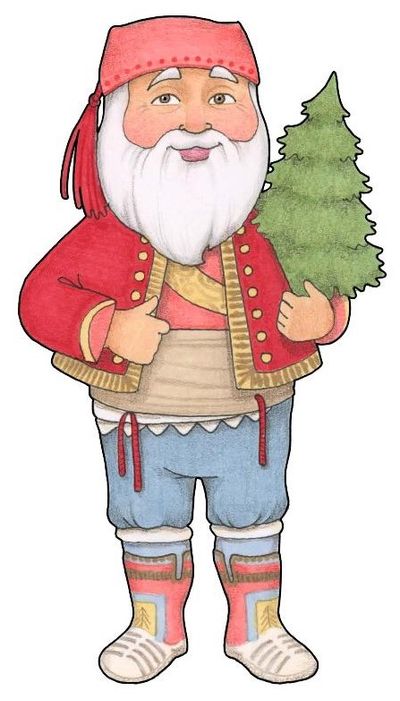
Serbia is a country located in the Balkans in Southeast Europe, bordered by Hungary to the north, Romania and Bulgaria to the east, North Macedonia to the south, and Croatia, Bosnia and Herzegovina, and Montenegro to the west. Serbia has a rich cultural and religious heritage, with the majority of its population adhering to the Serbian Orthodox Church. As a result, Serbian Christmas traditions are distinct and deeply tied to Orthodox Christianity, with Christmas being celebrated on January 7, according to the Julian calendar.
In Serbia, Santa Claus is not the central figure of Christmas. Instead, the focus is on the religious aspects of the holiday and family traditions. However, in recent years, a figure similar to Santa Claus, known as "Deda Mraz" (Grandfather Frost), has become more common, especially for New Year's Eve, when children receive gifts. Deda Mraz delivers presents to children, but traditionally, the gifts associated with Christmas come from the Christ Child (Božić Bata).
Christmas Eve (Badnje Veče) in Serbia is marked by unique customs. Families bring home a ceremonial log, known as the "badnjak" (usually an oak log), which symbolizes prosperity and health for the coming year. The badnjak is either burned in the fireplace or represented symbolically in homes and churches. Many Serbians attend a special church service on Christmas Eve, followed by a family gathering and a special meal, which traditionally consists of fish, beans, and other dishes prepared without meat, as Christmas Eve is a fasting day in the Orthodox tradition.
On Christmas Day (Božić), families break their fast with a feast that often includes roasted pork, sarma (cabbage rolls filled with minced meat and rice), and bread called "česnica," which is baked with a coin inside. The person who finds the coin is believed to have good luck for the coming year. Another key tradition is the breaking of a walnut, where family members each crack a walnut; if it’s healthy, it’s a sign of good fortune.
Christmas in Serbia is a time for family and religious reflection, and many people greet each other with the traditional phrase, "Hristos se rodi!" (Christ is born!), to which the response is "Vaistinu se rodi!" (Indeed, He is born!). The holiday season in Serbia extends through to Epiphany (January 19), marking the end of the Orthodox Christmas celebrations.
*Please note that this is a brief description, and while we strive for accuracy, the information provided may not be 100% guaranteed. If you notice any errors or have suggested edits, we encourage you to contact our office with your feedback.
Slovenia

Slovenia is a small country located in Central Europe, bordered by Austria to the north, Italy to the west, Hungary to the northeast, and Croatia to the south. Known for its picturesque landscapes, alpine scenery, and rich cultural history, Slovenia has strong Roman Catholic traditions, which are reflected in its Christmas celebrations.
In Slovenia, Santa Claus is known as "Božiček," and he delivers gifts to children on Christmas Eve (December 24) or Christmas Day (December 25). However, the more traditional figure associated with gift-giving is "Sveti Miklavž" (Saint Nicholas), whose feast day is celebrated on December 6. On the eve of Saint Nicholas Day, children place their shoes on windowsills, and if they’ve been good, they receive small gifts like sweets or fruit. Sveti Miklavž is often accompanied by devils or "parkeljni," who are there to frighten misbehaving children, though no harm comes to them.
Christmas Eve (Božična večer) is the most important part of the holiday season in Slovenia. Families gather for a festive meal, and it is common for Slovenians to attend Midnight Mass to celebrate the birth of Jesus. The Christmas meal often includes traditional dishes like roasted meats, potica (a rolled cake filled with nuts or poppy seeds), and various regional specialties. The holiday season is marked by festive markets, beautiful Christmas lights, and nativity scenes set up in homes and churches.
A unique Slovenian Christmas tradition is the burning of the "badnjak," a log or wood block placed on the fire on Christmas Eve, similar to the customs in other parts of the Balkans. This symbolizes warmth, prosperity, and unity for the family in the coming year. The holiday season in Slovenia continues through to Epiphany (January 6), when families celebrate the visit of the Three Wise Men.
In some regions, another figure known as "Dedek Mraz" (Grandfather Frost) is part of the holiday celebrations, especially around New Year's Eve. Dedek Mraz is said to bring gifts to children and is tied more to secular and New Year celebrations rather than Christmas.
Sponsored by:
The Volcic Family
*Please note that this is a brief description, and while we strive for accuracy, the information provided may not be 100% guaranteed. If you notice any errors or have suggested edits, we encourage you to contact our office with your feedback.
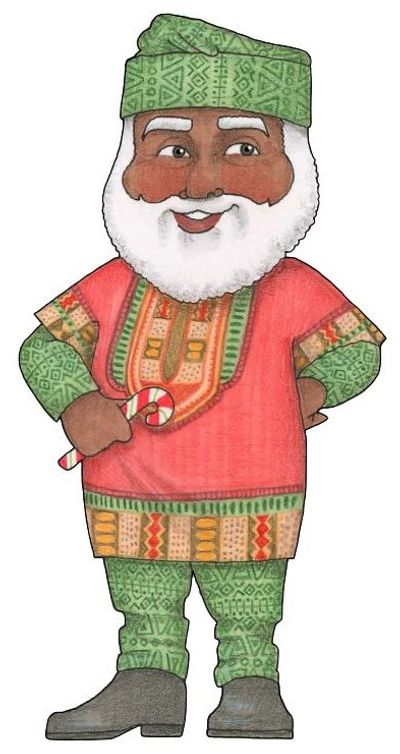
South Africa, located at the southern tip of the African continent, is known for its diverse cultures and landscapes. While Christmas is widely celebrated, the holiday takes place during the Southern Hemisphere’s summer, so South Africans enjoy warm weather and sunshine during the festive season. Christmas traditions in South Africa reflect both Christian customs and local influences, with a focus on family, food, and community.
In South Africa, Santa Claus is commonly known as "Father Christmas." Much like in other parts of the world, Father Christmas delivers gifts to children on Christmas Eve or Christmas morning. South African children often hang stockings or place shoes near the Christmas tree in anticipation of Father Christmas's arrival. The gift-giving tradition is similar to Western countries, but the warm climate makes for a unique holiday experience.
Christmas Day, celebrated on December 25, is typically a time for family gatherings and outdoor celebrations, such as barbecues (known locally as "braais"). Traditional Christmas meals in South Africa include roast meats like turkey or beef, as well as salads, cold meats, and desserts such as "malva pudding" (a sweet, spongy dessert served with warm custard). Given the warm weather, it’s common for families to enjoy their Christmas meals outside, often at the beach or by the pool.
Church services are also an important part of the holiday, with many South Africans attending Christmas Mass on Christmas Eve or Christmas morning. The holiday season is marked by festive decorations, Christmas trees, and lights, and communities often come together to celebrate with carol singing, nativity plays, and local markets.
Though Christmas Day is the main celebration, the holiday season extends through to New Year's Eve and New Year's Day, when families and friends gather for more festivities. Many South Africans take the opportunity to enjoy the outdoors, celebrating the holidays with picnics, beach outings, and braais in the summer sunshine.
*Please note that this is a brief description, and while we strive for accuracy, the information provided may not be 100% guaranteed. If you notice any errors or have suggested edits, we encourage you to contact our office with your feedback.
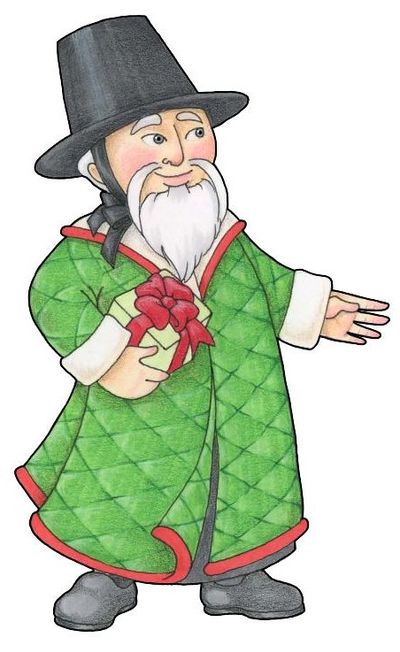
South Korea is a country located in East Asia, on the southern half of the Korean Peninsula, bordered by North Korea to the north. Although South Korea is predominantly a secular and Buddhist country, Christianity is one of the major religions, and Christmas is a public holiday, celebrated with a mix of religious and secular customs.
In South Korea, Santa Claus is known as "Santa Haraboji" (Santa Grandfather) or "Santa Kullosu." He is similar to the Western version of Santa Claus, but he is sometimes depicted wearing traditional Korean clothing, called "hanbok," instead of the usual red suit. Santa Haraboji brings gifts to children, and Christmas is celebrated in a festive, commercial way in South Korea, especially in major cities like Seoul.
For many South Koreans, Christmas is more of a secular holiday, celebrated with lights, decorations, and gift exchanges, rather than being solely focused on religious traditions. Department stores and shopping centers are beautifully decorated with Christmas trees and festive lights, creating a vibrant holiday atmosphere. It is common for friends and couples to exchange gifts, and Christmas Eve is often seen as a romantic holiday, with many couples going out for dinners or dates.
Churches play a significant role for Christian families, where they attend special Christmas services, which include carol singing and nativity scenes. Midnight Mass on Christmas Eve is a popular tradition for Christians in South Korea, and it is a time for prayer, reflection, and celebration of the birth of Jesus.
Traditional Christmas meals in South Korea are not as established as in Western countries, but many families and friends gather to share a meal. Western-style foods such as turkey, cakes, and cookies are popular, but they are often enjoyed with a Korean twist, including dishes like "bulgogi" (marinated beef), "japchae" (stir-fried glass noodles), and other local favorites.
While Christmas is celebrated on December 25, New Year’s Eve (Seollal) is a much bigger and more traditional holiday in South Korea, marking the Lunar New Year with family gatherings, ancestral rites, and traditional Korean foods.
*Please note that this is a brief description, and while we strive for accuracy, the information provided may not be 100% guaranteed. If you notice any errors or have suggested edits, we encourage you to contact our office with your feedback.
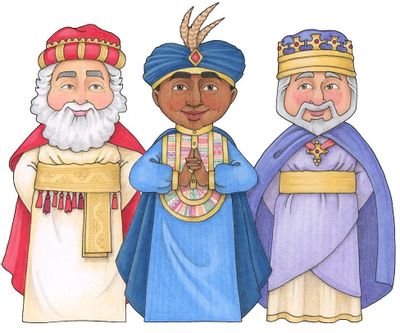
Spain is a country located in Southwestern Europe on the Iberian Peninsula, bordered by France, Portugal, Andorra, and the Mediterranean Sea. As a predominantly Catholic country, Christmas in Spain is a deeply religious and festive occasion, celebrated with a blend of faith, family, and tradition. The Christmas season in Spain stretches from early December through January 6, culminating in "Día de los Reyes" (Three Kings' Day).
In Spain, Santa Claus is known as "Papá Noel," but he plays a smaller role in Christmas traditions compared to other parts of the world. While Papá Noel does bring gifts to children on Christmas Eve or Christmas morning in some families, the central figures of gift-giving are the "Reyes Magos" (the Three Kings or Wise Men). The Reyes Magos bring presents to children on the night of January 5, and children wake up on January 6, "Día de los Reyes," to find their gifts. On the evening of January 5, grand parades called "La Cabalgata de Reyes" take place across Spain, with the Three Kings parading through the streets, throwing sweets and small gifts to crowds of children.
In addition to Papá Noel and the Three Kings, the Basque region of Spain has its own unique Christmas figure, "Olentzero." Olentzero is a kindly coal vendor who comes down from the mountains on Christmas Eve to bring gifts to Basque children. He is often depicted wearing traditional Basque clothing, with a beret and bag of treats for the children. Olentzero is a beloved figure, rooted in Basque folklore, symbolizing warmth and generosity.
Christmas Eve (Nochebuena) is the most important part of the holiday season in Spain, marked by a family gathering and a special meal that often includes seafood, roasted lamb, suckling pig, and a variety of sweets like "turrón" (a nougat-like candy) and "polvorones" (crumbly almond cookies). After the meal, many families attend Midnight Mass, known as "La Misa del Gallo" (The Rooster's Mass), so called because a rooster is said to have crowed the night Jesus was born.
Christmas Day (Día de Navidad) is usually spent with family, sharing meals and exchanging smaller gifts. Spanish homes are often decorated with Christmas lights, trees, and elaborate nativity scenes (belén), which are a key part of the holiday décor in Spain. These nativity scenes can be quite large and detailed, depicting not only the birth of Christ but also scenes from daily life in Bethlehem.
The festive season continues through New Year’s Eve (Nochevieja), when Spaniards gather to celebrate with family and friends. A unique tradition on this night is the eating of twelve grapes at midnight—one grape for each chime of the clock—to bring good luck in the coming year. The holiday season officially concludes on January 6 with Día de los Reyes, making the celebration of Christmas in Spain one of the longest and most cherished holiday seasons.
*Please note that this is a brief description, and while we strive for accuracy, the information provided may not be 100% guaranteed. If you notice any errors or have suggested edits, we encourage you to contact our office with your feedback.
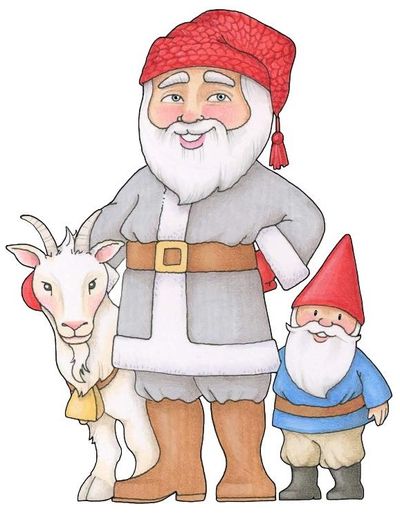
Sweden is a Scandinavian country located in Northern Europe, bordered by Norway to the west, Finland to the east, and the Baltic Sea to the south and southeast. Known for its wintry landscapes and deep-rooted traditions, Christmas in Sweden is a festive and cozy season, filled with lights, family gatherings, and ancient customs that reflect the country's strong Lutheran heritage.
In Sweden, Santa Claus is called "Jultomten," a figure derived from a combination of Scandinavian folklore and the modern Santa Claus. Jultomten is said to live in the forests, and he delivers gifts to children on Christmas Eve (December 24). Traditionally, children in Sweden wait for Jultomten to knock on the door on Christmas Eve, and he personally hands out presents. He is often accompanied by "julbock," the Yule Goat, which is a symbol of Swedish Christmas and represents an ancient pagan tradition.
The Swedish Christmas season begins with the Advent period, and one of the most significant early celebrations is St. Lucia’s Day on December 13. St. Lucia is the patron saint of light, and her feast day is celebrated with processions led by a young girl dressed as St. Lucia, wearing a crown of candles. This festival of lights is particularly important during the long, dark Scandinavian winter.
Christmas Eve (Julafton) is the most important day of celebration in Sweden. Families gather for a festive meal, often featuring a "julbord," or Christmas buffet, which includes traditional Swedish dishes such as pickled herring, gravlax (cured salmon), meatballs, ham, sausages, and "Janssons frestelse" (a creamy potato casserole). Desserts like gingerbread cookies (pepparkakor) and saffron buns (lussekatter) are also popular.
In many Swedish homes, it's common to watch the annual airing of the Disney special "From All of Us to All of You" (Kalle Anka), a Christmas tradition beloved by families since the 1960s. After the meal and festivities, many Swedes attend church services to celebrate the religious significance of Christmas.
The holiday season in Sweden continues through New Year's and into Epiphany on January 6, but many families extend the Christmas spirit until January 13, known as "Tjugondag Knut" (St. Knut’s Day), when they take down their Christmas decorations.
*Please note that this is a brief description, and while we strive for accuracy, the information provided may not be 100% guaranteed. If you notice any errors or have suggested edits, we encourage you to contact our office with your feedback.
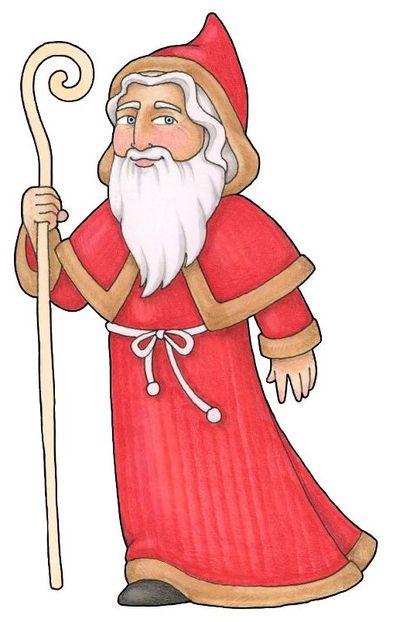
Switzerland is a landlocked country in Central Europe, bordered by France, Germany, Austria, Liechtenstein, and Italy. Known for its picturesque alpine scenery, diverse culture, and multilingual population, Switzerland celebrates Christmas with traditions that reflect its blend of German, French, and Italian influences, depending on the region. Christmas in Switzerland is a time for family, religious observance, and festive markets, with many cherished customs.
In Switzerland, Santa Claus is known by different names depending on the region. In the German-speaking areas, he is called "Samichlaus," while in the French-speaking regions, he is known as "Père Noël," and in the Italian-speaking regions, he is called "Babbo Natale." Samichlaus typically visits on December 6, St. Nicholas Day, and brings small gifts like nuts, fruits, and chocolates to children. He is often accompanied by his helper "Schmutzli," who carries a sack of coal or switches for children who have misbehaved. This tradition is particularly strong in rural areas, where Samichlaus and Schmutzli sometimes make personal visits to homes or schools.
While Samichlaus brings small gifts on St. Nicholas Day, Christmas Eve (December 24) is the main event for most Swiss families. Children receive larger presents from Christkind (the Christ Child) or from Santa Claus on this evening. Christmas Eve is typically celebrated with a family meal, which can vary depending on the region but often includes dishes like fondue, raclette, roasted meats, and Christmas cookies such as "mailänderli" (buttery cookies) and "zimtsterne" (cinnamon stars). After dinner, many families attend Midnight Mass to celebrate the religious aspect of the holiday.
One of Switzerland’s most beloved Christmas traditions is the "Advent calendar," which counts down the days to Christmas. In some towns and villages, life-sized Advent calendars are created, where a new window is opened each night, revealing decorations or a festive scene. Christmas markets, particularly in cities like Zurich, Basel, and Lucerne, are a highlight of the season, offering local crafts, mulled wine, and festive treats.
Switzerland’s Christmas decorations often include nativity scenes (krippen), Christmas trees, and candles. In some regions, children carry lanterns or star-shaped lights as part of the tradition. The celebration continues into Christmas Day (December 25) and sometimes into January 6, when Epiphany is marked by the baking of a special cake called "Dreikönigskuchen," where a hidden figure of a king is baked inside, and the finder is crowned king or queen for the day.
*Please note that this is a brief description, and while we strive for accuracy, the information provided may not be 100% guaranteed. If you notice any errors or have suggested edits, we encourage you to contact our office with your feedback.
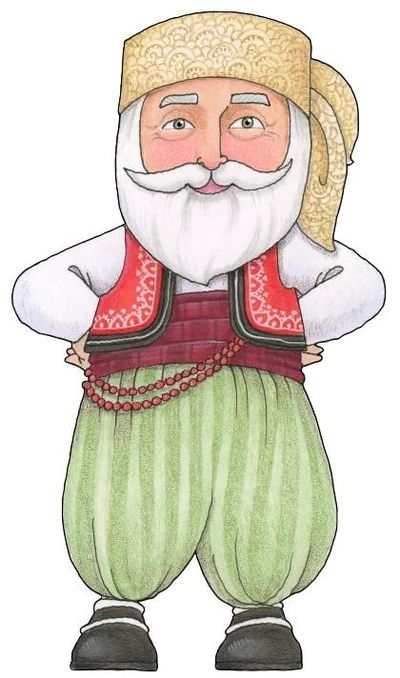
Syria is a country located in the Middle East, bordered by Turkey to the north, Iraq to the east, Jordan to the south, and Lebanon and Israel to the west. Although Syria is predominantly Muslim, it has a significant Christian population, and Christmas is celebrated with a blend of religious devotion, family traditions, and community festivities, particularly in areas with strong Christian communities like Damascus, Aleppo, and Homs.
In Syria, Santa Claus is known as "Baba Noel" (Father Christmas), who brings gifts to children on Christmas Eve. However, the focus of Christmas in Syria is more on religious traditions and family gatherings. Baba Noel’s role is more prominent in urban Christian communities, where children eagerly anticipate his arrival.
Christmas in Syria begins with the Advent season, and the celebrations culminate on Christmas Eve (December 24), when families gather to celebrate the birth of Jesus. One of the most important traditions is attending Midnight Mass, where the Christmas story is retold, and the birth of Christ is celebrated. After the Mass, families gather for a festive meal that typically includes traditional Syrian dishes like kibbeh (a dish made of ground meat and bulgur), roasted meats, and sweets such as baklava and ma’amoul (cookies filled with dates or nuts).
A unique Syrian tradition is the burning of the "Christmas bonfire" on Christmas Eve. Families and communities gather around the bonfire, and prayers are recited. The direction of the flames is believed to foretell good or bad fortune for the coming year. After the prayers, families return home for a festive meal, and gifts are exchanged, usually among close family members.
Christmas trees and nativity scenes are popular in Syrian Christian homes, and in some regions, homes are decorated with lights and ornaments. The Christmas season in Syria extends through New Year's and culminates on Epiphany (January 6), which is marked by church services and celebrations of the visit of the Three Wise Men.
*Please note that this is a brief description, and while we strive for accuracy, the information provided may not be 100% guaranteed. If you notice any errors or have suggested edits, we encourage you to contact our office with your feedback.
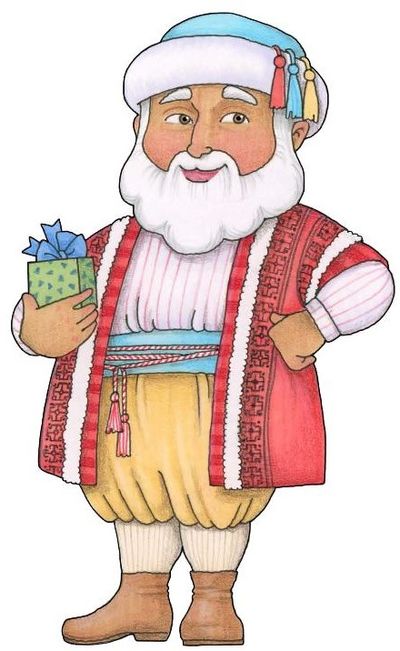
Turkey is a country that straddles both Europe and Asia, with a rich history influenced by many cultures and religions. Although Turkey is predominantly a Muslim nation, there are Christian communities, particularly in cities like Istanbul and Izmir, that celebrate Christmas. The influence of Western culture has also made some Christmas customs more visible, particularly in urban areas, where decorations, lights, and even Santa Claus can be seen during the holiday season.
In Turkey, Santa Claus is known as "Noel Baba" (Father Christmas). Interestingly, the historical figure behind Santa Claus, Saint Nicholas, was born in what is now modern-day Turkey, in the ancient town of Myra (present-day Demre). Though Christmas is not widely celebrated, Noel Baba has a presence in Turkish culture, especially as a figure associated with New Year’s Eve, rather than Christmas. In Turkey, some families exchange gifts and enjoy festive meals on New Year’s Eve, when Noel Baba is said to bring gifts for children.
For the small Christian population in Turkey, Christmas is celebrated with religious services and family gatherings. Christmas Eve and Christmas Day (December 24–25) are important for attending Midnight Mass, particularly for Orthodox and Catholic Christians. Churches in Turkey are often decorated with lights, and nativity scenes can be found in some Christian homes and churches. The meal for Christian families celebrating Christmas in Turkey might include traditional Turkish dishes such as dolma (stuffed grape leaves), kebabs, and sweets like baklava. Since Christmas is not a public holiday in Turkey, celebrations are mostly held privately within families or Christian communities.
New Year’s Eve, however, is a more festive occasion for the general population, when people gather to celebrate with food, music, and fireworks. Some New Year’s celebrations borrow elements from Western Christmas traditions, such as putting up Christmas trees and lights, and exchanging gifts in the spirit of the season.
*Please note that this is a brief description, and while we strive for accuracy, the information provided may not be 100% guaranteed. If you notice any errors or have suggested edits, we encourage you to contact our office with your feedback.
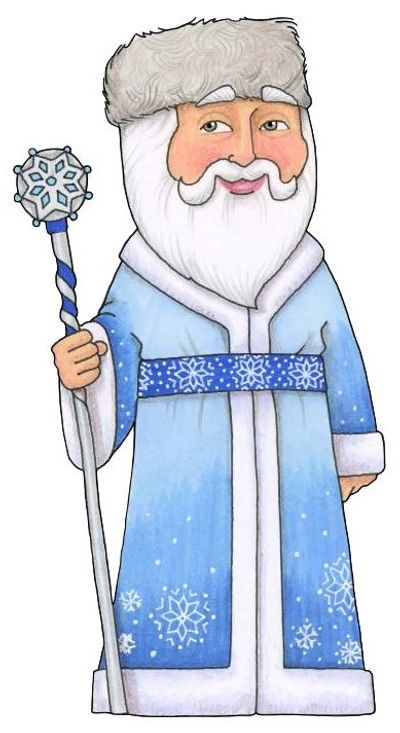
Ukraine is located in Eastern Europe, bordered by Russia, Belarus, Poland, Slovakia, Hungary, Romania, and Moldova, with coastlines along the Black Sea and the Sea of Azov. Ukraine has a rich cultural and religious heritage, and Christmas is one of the most important holidays, particularly for the country’s Christian Orthodox population. Christmas in Ukraine is celebrated according to the Julian calendar, with the main festivities taking place on January 6 and 7.
In Ukraine, Santa Claus is known as "Did Moroz" (Grandfather Frost), but his role is typically more associated with New Year’s celebrations. Did Moroz delivers gifts to children on New Year's Eve, accompanied by his granddaughter "Snegurochka" (the Snow Maiden). However, Christmas is more focused on religious and family traditions, with the Christ Child being the central figure of the holiday.
The Ukrainian Christmas season begins with Advent and culminates on Christmas Eve, known as "Sviat Vechir" (Holy Evening), which is observed on January 6. On this evening, families gather for a special meal that consists of 12 dishes, symbolizing the 12 apostles. The meal is typically meatless, as Christmas Eve is a day of fasting. Traditional dishes include "kutya" (a sweet grain pudding made from wheat, honey, and poppy seeds), "borscht" (beet soup), "varenyky" (dumplings), and "holubtsi" (cabbage rolls).
One of the most important customs is the "kolyada" (caroling), where groups of people, often children, go from house to house singing traditional Ukrainian Christmas carols and receiving small gifts in return. Carolers carry a "didukh," a sheaf of wheat symbolizing prosperity and the spirit of the ancestors, which is placed in the home as a Christmas decoration.
Ukrainians also attend a special church service on Christmas Day (January 7), where prayers and hymns are dedicated to the birth of Jesus. Homes and churches are decorated with icons, candles, and sometimes a nativity scene ("vertep"), which is often accompanied by traditional Christmas plays.
Christmas celebrations in Ukraine continue until Epiphany (January 19), which marks the end of the festive season. On Epiphany, many Ukrainians participate in the blessing of water ceremonies, and some even take part in ice bathing in rivers or lakes, a tradition thought to cleanse the soul and bring good health for the coming year.
*Please note that this is a brief description, and while we strive for accuracy, the information provided may not be 100% guaranteed. If you notice any errors or have suggested edits, we encourage you to contact our office with your feedback.
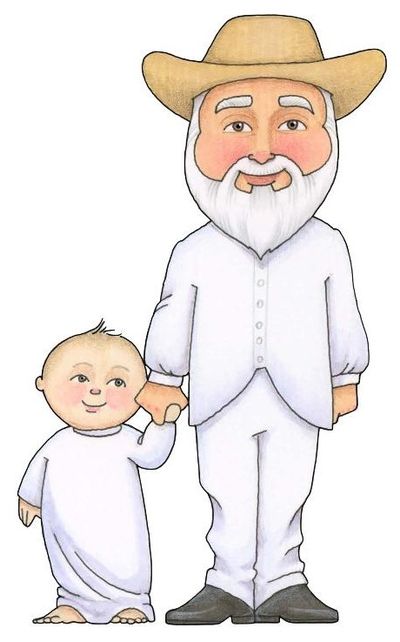
Venezuela is a country located in the northern part of South America, bordered by Colombia, Brazil, and Guyana, with coastlines along the Caribbean Sea and the Atlantic Ocean. Christmas in Venezuela is a deeply religious and festive occasion, influenced by the country’s Catholic heritage and a love for lively celebrations. The Christmas season in Venezuela begins in early December and continues through the first week of January, with family, food, and music playing central roles.
In Venezuela, Santa Claus is known as "San Nicolás," though his role is less prominent compared to Western countries. While San Nicolás has become more common in urban areas, the focus in Venezuela is more on traditional religious celebrations and community gatherings. Venezuelan children typically receive their gifts on Christmas Eve, which are said to be brought by "El Niño Jesús" (the Baby Jesus), rather than Santa Claus.
Christmas Eve, known as "Nochebuena," is the most important day of the holiday season in Venezuela. Families gather for a large festive meal after attending Midnight Mass (Misa de Gallo) to celebrate the birth of Christ. Traditional Venezuelan Christmas dishes include "hallacas" (a dish made of corn dough filled with meats, wrapped in plantain leaves), "pan de jamón" (a savory bread filled with ham, raisins, and olives), and "dulce de lechosa" (candied papaya dessert). After dinner, many families exchange gifts and continue the celebration with music and dancing.
A unique and beloved Christmas tradition in Venezuela is the "patinatas," where people roller skate to church on the mornings leading up to Christmas. This tradition is particularly popular in the capital, Caracas, where streets are closed to cars so people can skate safely to early morning church services.
Another key part of Venezuelan Christmas is the music. "Gaita," a traditional folk music style from the Zulia region, is often played during the holiday season, along with other festive tunes. Families and communities come together to sing carols and enjoy music throughout the season.
Venezuelan Christmas celebrations continue through to New Year's Eve (Año Nuevo) and beyond, with January 6 marking "Día de los Reyes" (Three Kings' Day), when the holiday season officially comes to an end. On this day, children leave shoes by the door for the Three Wise Men to fill with gifts.
*Please note that this is a brief description, and while we strive for accuracy, the information provided may not be 100% guaranteed. If you notice any errors or have suggested edits, we encourage you to contact our office with your feedback.
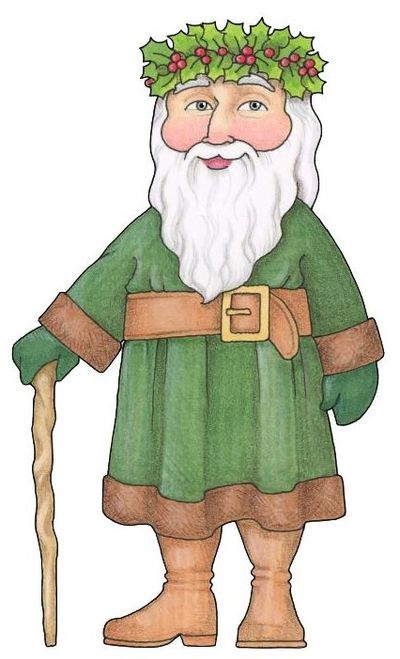
Wales is a country that is part of the United Kingdom, located in the western part of the island of Great Britain. Known for its rich history, beautiful landscapes, and strong cultural identity, Wales celebrates Christmas with a mix of Christian and local traditions, many of which have deep roots in Welsh folklore and language. The Welsh language, culture, and music play an important role in Christmas celebrations throughout the country.
In Wales, Santa Claus is called "Sion Corn," which translates to "Chimney John." Sion Corn delivers gifts to children on Christmas Eve, much like Santa Claus in other parts of the world. Children in Wales hang stockings by the fireplace or the foot of their beds in the hope that Sion Corn will fill them with presents by morning.
The Christmas season in Wales is filled with festive traditions that combine music, food, and community. One of the most important Welsh traditions is the singing of "Plygain" carols. Plygain is a traditional Welsh Christmas service held at dawn, where groups of people gather in churches to sing beautiful, often unaccompanied, Christmas carols in the Welsh language. The service was historically held between 3 and 6 a.m., and the tradition continues in some rural communities to this day.
Welsh Christmas meals typically include roast meats like turkey or beef, along with vegetables, potatoes, and traditional puddings. One popular treat is "Welsh cakes," flat, spiced cakes often cooked on a griddle. Another beloved dessert is "bara brith," a rich fruit loaf often served during the holidays.
Wales also has its own unique Christmas customs. One such tradition is the "Mari Lwyd," an ancient pagan ritual that takes place during the Christmas and New Year period in some areas of Wales. The Mari Lwyd involves a group of people going door to door, singing and engaging in a form of rhyming battle known as "pwnco." They carry a horse's skull on a pole, draped with a white sheet, as part of the ritual, which is meant to bring good luck to the households visited.
Christmas celebrations in Wales extend through to New Year's Eve (Nos Galan) and beyond, with families and friends coming together to mark the occasion with festive meals, music, and dancing. *
*Please note that this is a brief description, and while we strive for accuracy, the information provided may not be 100% guaranteed. If you notice any errors or have suggested edits, we encourage you to contact our office with your feedback.